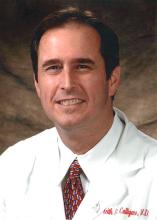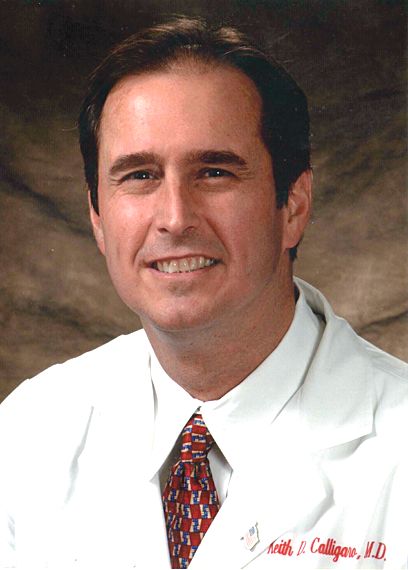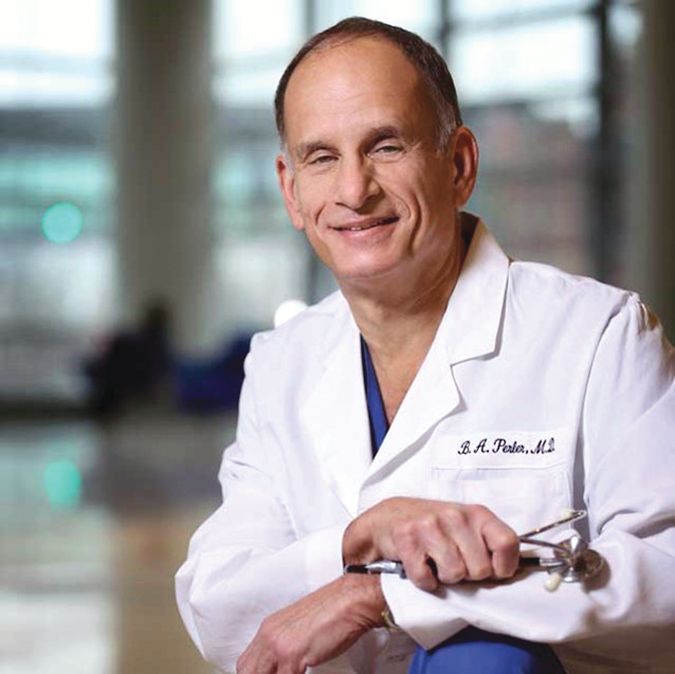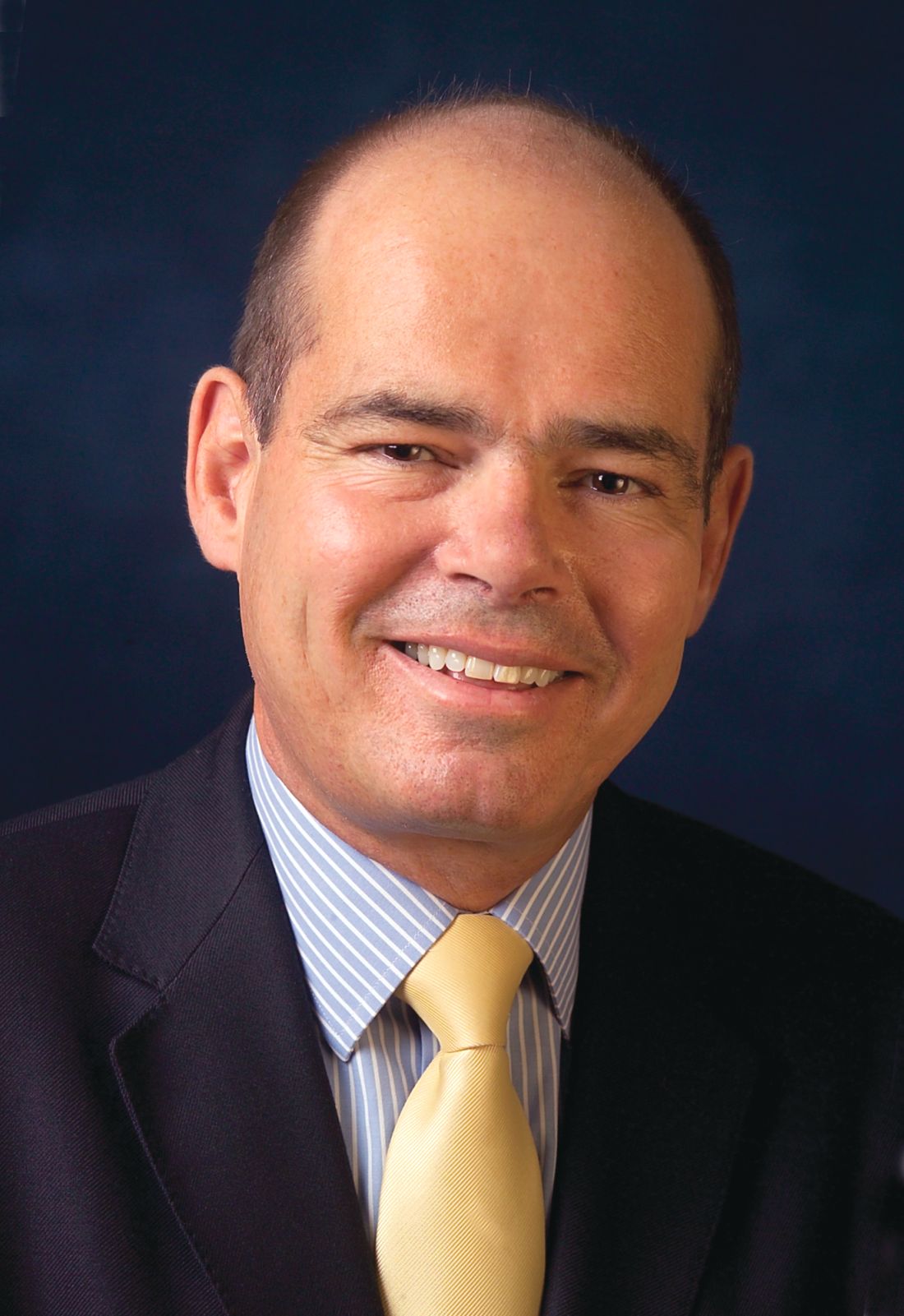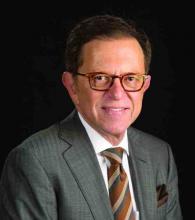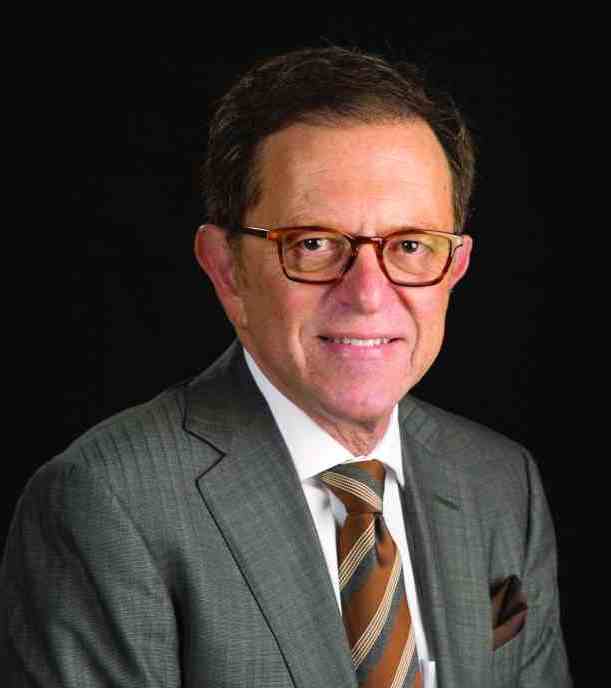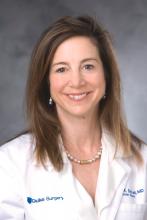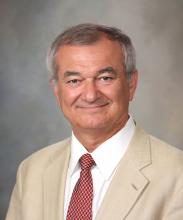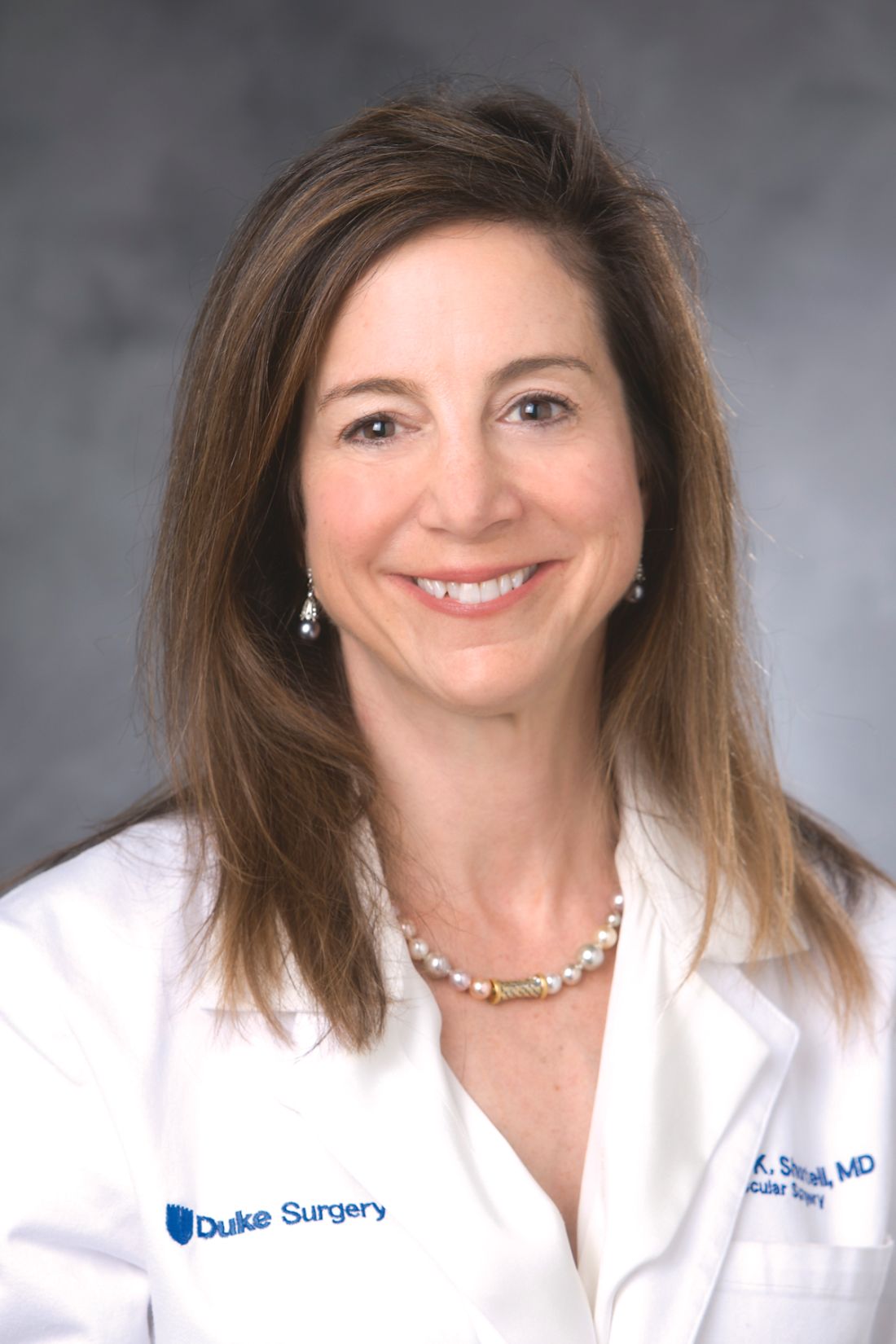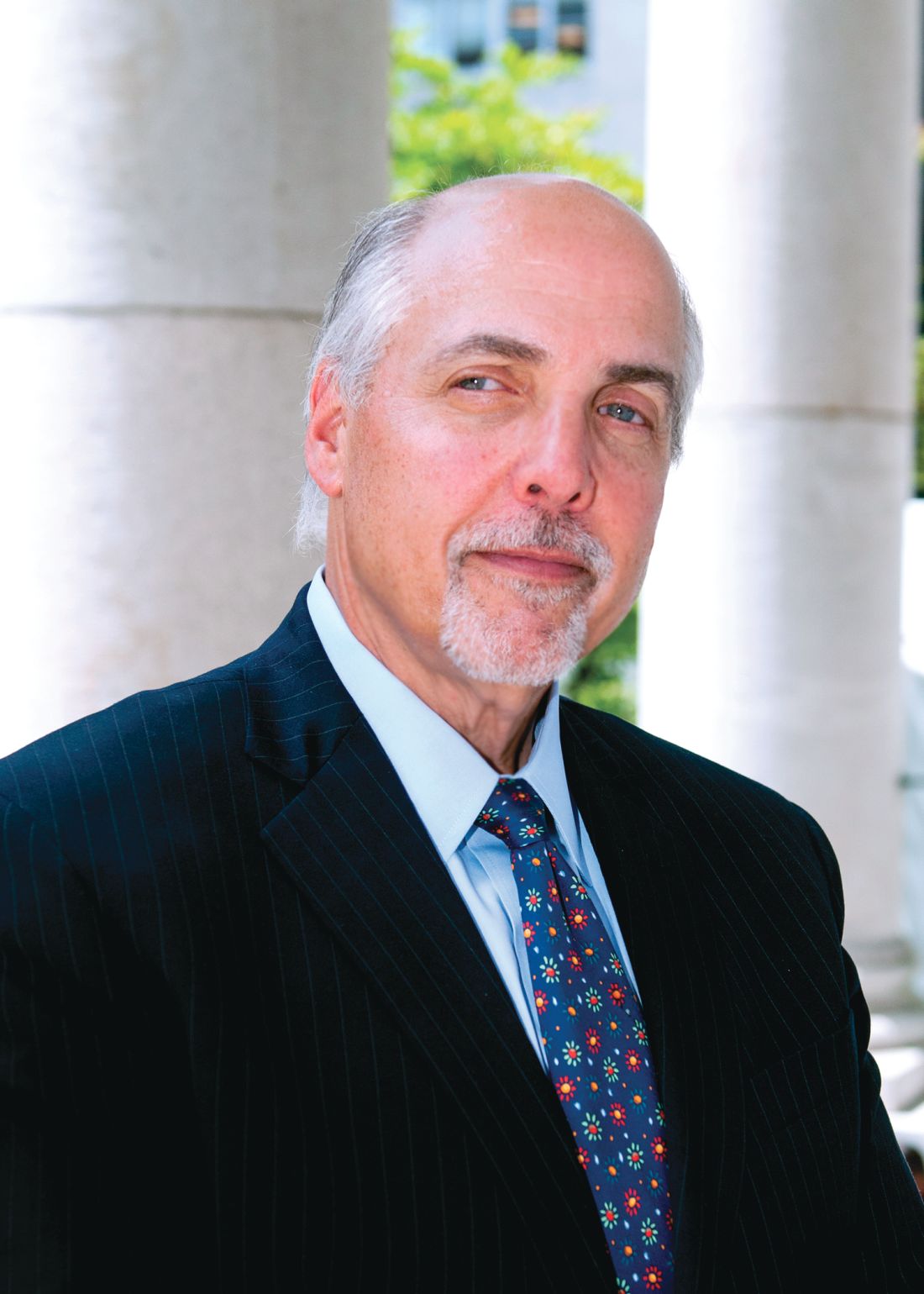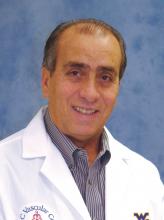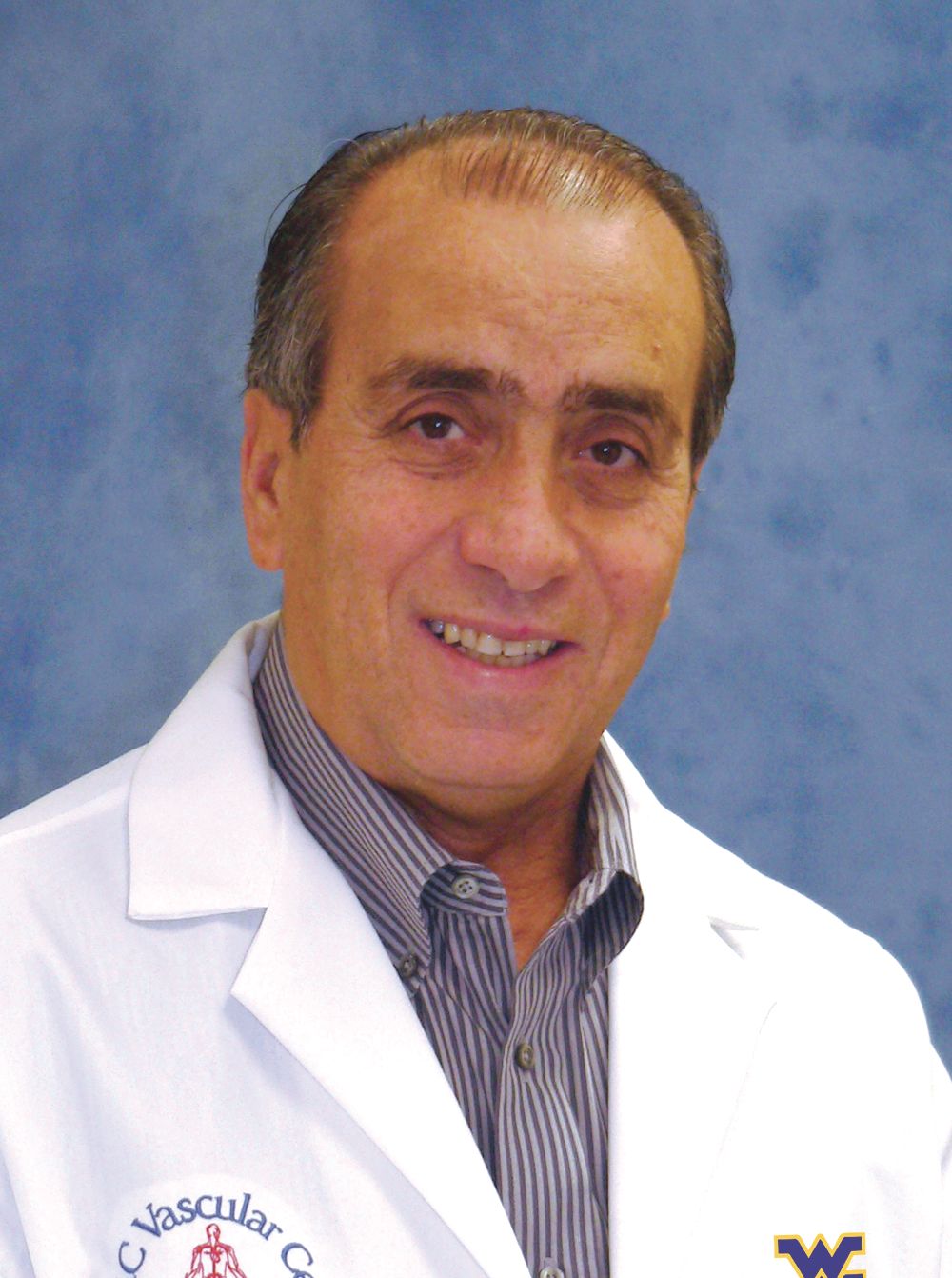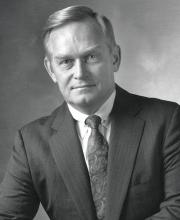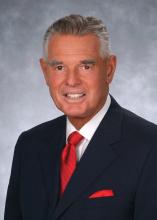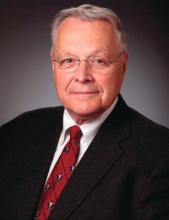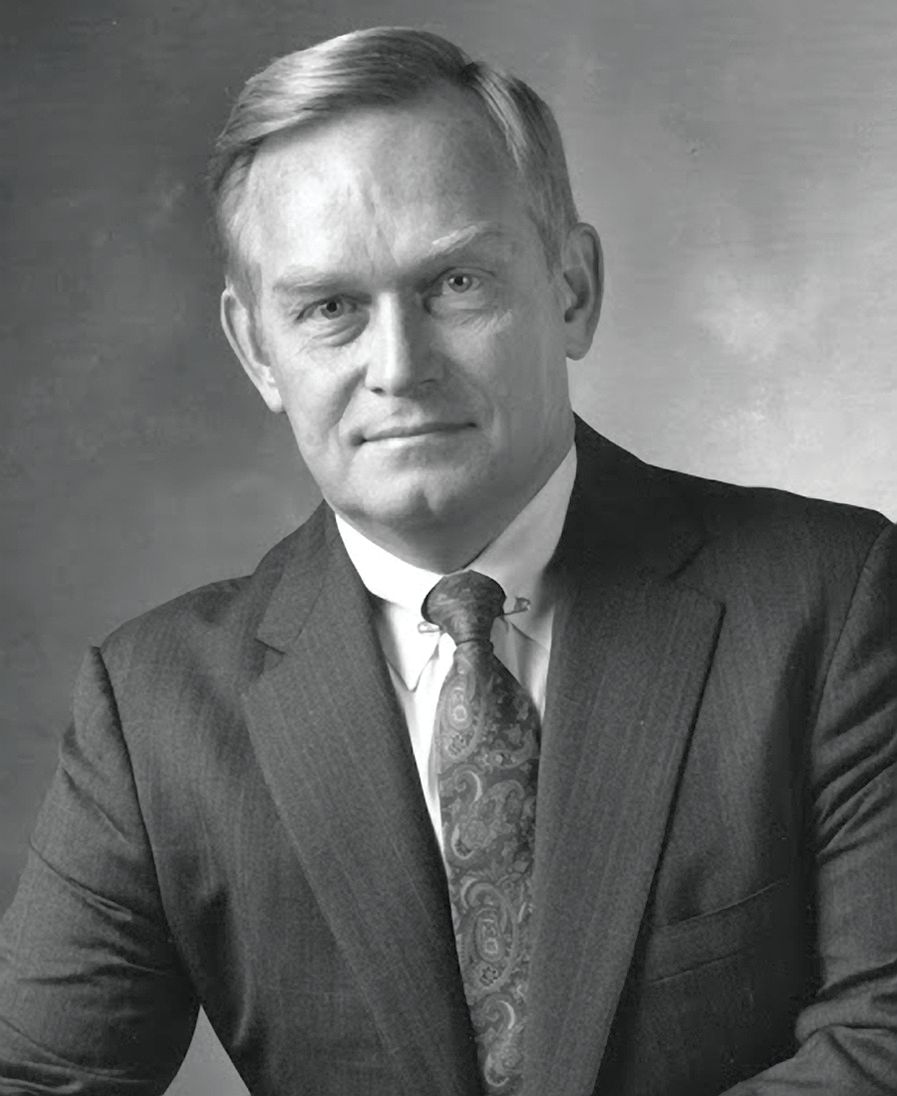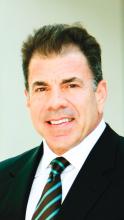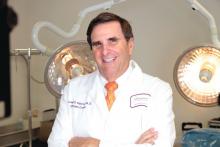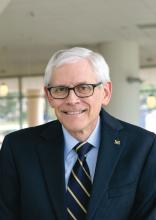User login
Session Spotlights Infection in Aneurysms, Grafts, and Endografts
The ongoing discussion over the optimal management of infection in aneurysms and grafts takes center stage in the session, “New Developments in the Treatment of Infected Aneurysms, Prosthetic Arterial Grafts, and Aortic Endografts,” on Friday morning. The session includes two debates: one on mycotic abdominal aortic aneurysms and what to do about them, and the other on the optimal techniques for handling infected aortic grafts and endografts.
“The management of infected aortic grafts is challenging and controversial,” according to Dr. Keith Calligaro, co-moderator of the session. Different aspects of treatment will be discussed, said Dr. Calligaro, chief of the section of vascular surgery and endovascular therapy at Pennsylvania Hospital, and clinical professor of surgery, University of Pennsylvania School of Medicine.
The session begins with a presentation suggesting a change in practice, “With Mycotic AAAs There Has Been a Paradigm Shift in Treatment: A Propensity Matched Multicenter Study Shows That EVAR Is Better than Open Repair as a Durable or Bridge Treatment,” by Dr. Anders Wanhainen, professor of surgery at Uppsala University. Dr. Wanhainen is followed by Dr. Manju Kalra, professor, Mayo Clinic College of Medicine, speaking on “Intraabdominal Extra-Anatomic Bypass for Para- Or Supra-Renal Aortic Infections: Techniques and Results.” Dr. Fred A. Weaver, professor of surgery, Keck School of Medicine at the University of Southern California, then delves into the role of endovascular aortic aneurysm repair (EVAR) for mycotic AAAs.
Next, then the session gears up for a debate, with Dr. Boonprasit Kritpracha, instructor and vascular surgeon, Prince of Songkla University in Thailand, taking the side of “EVAR Should Be the First Choice in Treating Mycotic AAAs: Based on a 10-Year Experience.” Dr. Kritpracha is followed by session co-moderator Dr. Thomas C. Bower, professor of surgery, Mayo Clinic College of Medicine and Science, who takes the view, “Not So: Why Open Repair Should Be the First Choice in Treating Most Mycotic AAAs.”
A talk on the neoaortoiliac system (NAIS) procedure for the treatment of the infected aortic graft, “Technical Tips for Facilitating Deep Vein Grafts for Aortoiliac Arterial and Graft Infections,” by Dr. James H. Black, III, The David Goldfarb, MD Associate Professor of Surgery, The Johns Hopkins University School of Medicine, completes the first half of the session.
The next part of the session focuses on arterial graft and endograft infections. Dr. Max Zegelman, professor of surgery at JWG-University Frankfurt, begins with a review of new techniques for the in situ repair of infected prosthetic arterial grafts and the impact of negative pressure wound therapy.
The presentations are followed by a second debate on the topic of removal vs. saving of infected aortic grafts and endografts. Dr. Colin D. Bicknell, clinical senior lecturer, Imperial College, takes the side of “Definitive Excisional Graft Removal Is a Must for All Infected Aortic Grafts and Endografts,” while co-moderator Dr. Calligaro takes the side of “Not So: More Conservative Graft Saving May Sometimes Be the Best Treatment for infected Aortic Grafts and Endografts if Certain Technical Steps and Adjuncts Are Used.”
“The take-home message is that, in general, total graft excision of infected intracavitary prosthetic and endovascular aortic grafts is recommended, but the surgeon needs to be aware that in certain cases, partial or complete graft preservation may be a better option,” Dr. Calligaro said.
The session continues with more on the topic of treating infected endografts. Dr. Kamphol Laohapensang, professor of vascular surgery, Chiang Mai University Hospital in Thailand, will focus on treating infected endografts after EVAR and under what circumstances endografts are effective for treating mycotic AAAs.
The ongoing discussion over the optimal management of infection in aneurysms and grafts takes center stage in the session, “New Developments in the Treatment of Infected Aneurysms, Prosthetic Arterial Grafts, and Aortic Endografts,” on Friday morning. The session includes two debates: one on mycotic abdominal aortic aneurysms and what to do about them, and the other on the optimal techniques for handling infected aortic grafts and endografts.
“The management of infected aortic grafts is challenging and controversial,” according to Dr. Keith Calligaro, co-moderator of the session. Different aspects of treatment will be discussed, said Dr. Calligaro, chief of the section of vascular surgery and endovascular therapy at Pennsylvania Hospital, and clinical professor of surgery, University of Pennsylvania School of Medicine.
The session begins with a presentation suggesting a change in practice, “With Mycotic AAAs There Has Been a Paradigm Shift in Treatment: A Propensity Matched Multicenter Study Shows That EVAR Is Better than Open Repair as a Durable or Bridge Treatment,” by Dr. Anders Wanhainen, professor of surgery at Uppsala University. Dr. Wanhainen is followed by Dr. Manju Kalra, professor, Mayo Clinic College of Medicine, speaking on “Intraabdominal Extra-Anatomic Bypass for Para- Or Supra-Renal Aortic Infections: Techniques and Results.” Dr. Fred A. Weaver, professor of surgery, Keck School of Medicine at the University of Southern California, then delves into the role of endovascular aortic aneurysm repair (EVAR) for mycotic AAAs.
Next, then the session gears up for a debate, with Dr. Boonprasit Kritpracha, instructor and vascular surgeon, Prince of Songkla University in Thailand, taking the side of “EVAR Should Be the First Choice in Treating Mycotic AAAs: Based on a 10-Year Experience.” Dr. Kritpracha is followed by session co-moderator Dr. Thomas C. Bower, professor of surgery, Mayo Clinic College of Medicine and Science, who takes the view, “Not So: Why Open Repair Should Be the First Choice in Treating Most Mycotic AAAs.”
A talk on the neoaortoiliac system (NAIS) procedure for the treatment of the infected aortic graft, “Technical Tips for Facilitating Deep Vein Grafts for Aortoiliac Arterial and Graft Infections,” by Dr. James H. Black, III, The David Goldfarb, MD Associate Professor of Surgery, The Johns Hopkins University School of Medicine, completes the first half of the session.
The next part of the session focuses on arterial graft and endograft infections. Dr. Max Zegelman, professor of surgery at JWG-University Frankfurt, begins with a review of new techniques for the in situ repair of infected prosthetic arterial grafts and the impact of negative pressure wound therapy.
The presentations are followed by a second debate on the topic of removal vs. saving of infected aortic grafts and endografts. Dr. Colin D. Bicknell, clinical senior lecturer, Imperial College, takes the side of “Definitive Excisional Graft Removal Is a Must for All Infected Aortic Grafts and Endografts,” while co-moderator Dr. Calligaro takes the side of “Not So: More Conservative Graft Saving May Sometimes Be the Best Treatment for infected Aortic Grafts and Endografts if Certain Technical Steps and Adjuncts Are Used.”
“The take-home message is that, in general, total graft excision of infected intracavitary prosthetic and endovascular aortic grafts is recommended, but the surgeon needs to be aware that in certain cases, partial or complete graft preservation may be a better option,” Dr. Calligaro said.
The session continues with more on the topic of treating infected endografts. Dr. Kamphol Laohapensang, professor of vascular surgery, Chiang Mai University Hospital in Thailand, will focus on treating infected endografts after EVAR and under what circumstances endografts are effective for treating mycotic AAAs.
The ongoing discussion over the optimal management of infection in aneurysms and grafts takes center stage in the session, “New Developments in the Treatment of Infected Aneurysms, Prosthetic Arterial Grafts, and Aortic Endografts,” on Friday morning. The session includes two debates: one on mycotic abdominal aortic aneurysms and what to do about them, and the other on the optimal techniques for handling infected aortic grafts and endografts.
“The management of infected aortic grafts is challenging and controversial,” according to Dr. Keith Calligaro, co-moderator of the session. Different aspects of treatment will be discussed, said Dr. Calligaro, chief of the section of vascular surgery and endovascular therapy at Pennsylvania Hospital, and clinical professor of surgery, University of Pennsylvania School of Medicine.
The session begins with a presentation suggesting a change in practice, “With Mycotic AAAs There Has Been a Paradigm Shift in Treatment: A Propensity Matched Multicenter Study Shows That EVAR Is Better than Open Repair as a Durable or Bridge Treatment,” by Dr. Anders Wanhainen, professor of surgery at Uppsala University. Dr. Wanhainen is followed by Dr. Manju Kalra, professor, Mayo Clinic College of Medicine, speaking on “Intraabdominal Extra-Anatomic Bypass for Para- Or Supra-Renal Aortic Infections: Techniques and Results.” Dr. Fred A. Weaver, professor of surgery, Keck School of Medicine at the University of Southern California, then delves into the role of endovascular aortic aneurysm repair (EVAR) for mycotic AAAs.
Next, then the session gears up for a debate, with Dr. Boonprasit Kritpracha, instructor and vascular surgeon, Prince of Songkla University in Thailand, taking the side of “EVAR Should Be the First Choice in Treating Mycotic AAAs: Based on a 10-Year Experience.” Dr. Kritpracha is followed by session co-moderator Dr. Thomas C. Bower, professor of surgery, Mayo Clinic College of Medicine and Science, who takes the view, “Not So: Why Open Repair Should Be the First Choice in Treating Most Mycotic AAAs.”
A talk on the neoaortoiliac system (NAIS) procedure for the treatment of the infected aortic graft, “Technical Tips for Facilitating Deep Vein Grafts for Aortoiliac Arterial and Graft Infections,” by Dr. James H. Black, III, The David Goldfarb, MD Associate Professor of Surgery, The Johns Hopkins University School of Medicine, completes the first half of the session.
The next part of the session focuses on arterial graft and endograft infections. Dr. Max Zegelman, professor of surgery at JWG-University Frankfurt, begins with a review of new techniques for the in situ repair of infected prosthetic arterial grafts and the impact of negative pressure wound therapy.
The presentations are followed by a second debate on the topic of removal vs. saving of infected aortic grafts and endografts. Dr. Colin D. Bicknell, clinical senior lecturer, Imperial College, takes the side of “Definitive Excisional Graft Removal Is a Must for All Infected Aortic Grafts and Endografts,” while co-moderator Dr. Calligaro takes the side of “Not So: More Conservative Graft Saving May Sometimes Be the Best Treatment for infected Aortic Grafts and Endografts if Certain Technical Steps and Adjuncts Are Used.”
“The take-home message is that, in general, total graft excision of infected intracavitary prosthetic and endovascular aortic grafts is recommended, but the surgeon needs to be aware that in certain cases, partial or complete graft preservation may be a better option,” Dr. Calligaro said.
The session continues with more on the topic of treating infected endografts. Dr. Kamphol Laohapensang, professor of vascular surgery, Chiang Mai University Hospital in Thailand, will focus on treating infected endografts after EVAR and under what circumstances endografts are effective for treating mycotic AAAs.
Progress in Vascular Disease Treatments: Hype vs. Reality
Today we are witnessing unprecedented rapid development and dissemination of new scientific information regarding vascular diseases, and it is becoming increasingly difficult for busy practitioners to keep up with the avalanche of information, according to Dr. Bruce A. Perler.
To help practitioners differentiate the hype from reality, the “Progress in the Medical Treatments of Vascular Disease; Vascular Diseases and Risk Prediction” session on Friday will bring together internationally respected experts in the field. These faculty will present “the latest and most important advances in the perioperative and long-term medical management of our patients in a succinct and easily digestible fashion,” said Dr. Perler of Johns Hopkins University School of Medicine, who will co-moderate the session with Dr. Caron B. Rockman of New York University School of Medicine.
He added that the information presented in this session will afford the practitioner the latest scientifically proven perioperative and long-term therapy to optimize the patient’s circulatory health.
Further, attendees can take what they learn in this session back to their practice to properly counsel patients about their care – and to answer the questions that patients often bring to the office about these drugs and issues that they hear about in the lay press, he said.
Two critically important talks to be included in the session are: “Which Patients Should Receive Primary Prevention Lipid Lowering Statin Therapy: What Drug and Dose: How Do the HOPE 3 Trial Findings Help,” by Jeffrey S. Berger, MD, associate professor of medicine and surgery, NYU School of Medicine, and “How Do PCSK-9 Inhibitors Work: When and How Should They Currently Be Used: Advantages and Limitations,” by Dr. Natalie A. Marks of the NYU Lutheran Medical Center, he said.
“Hardly a month goes by without yet another article appearing in the lay press about statins. Patients are aware of statins, the associated controversies, and now are hearing about PCSK-9 inhibitors. These talks will inform the vascular surgeon about the key issues with respect to statin therapy and this exciting new alternative,” he said.
Among the nine other informative talks to be presented in the session cover important topics such as ACE inhibitors, angiotensin receptor blockers, the use of cilostazol, and troponin texting.
“Achieving the best results of our vascular surgical procedures requires more than doing the right procedure on the right patient at the right time,” Dr. Perler said. “It also requires managing the patient’s medical and perioperative care compulsively. Keeping abreast of the latest developments, highlighted in this session, will not only optimize your patients’ care, but provide a competitive practice advantage for the contemporary vascular surgeon.”
Today we are witnessing unprecedented rapid development and dissemination of new scientific information regarding vascular diseases, and it is becoming increasingly difficult for busy practitioners to keep up with the avalanche of information, according to Dr. Bruce A. Perler.
To help practitioners differentiate the hype from reality, the “Progress in the Medical Treatments of Vascular Disease; Vascular Diseases and Risk Prediction” session on Friday will bring together internationally respected experts in the field. These faculty will present “the latest and most important advances in the perioperative and long-term medical management of our patients in a succinct and easily digestible fashion,” said Dr. Perler of Johns Hopkins University School of Medicine, who will co-moderate the session with Dr. Caron B. Rockman of New York University School of Medicine.
He added that the information presented in this session will afford the practitioner the latest scientifically proven perioperative and long-term therapy to optimize the patient’s circulatory health.
Further, attendees can take what they learn in this session back to their practice to properly counsel patients about their care – and to answer the questions that patients often bring to the office about these drugs and issues that they hear about in the lay press, he said.
Two critically important talks to be included in the session are: “Which Patients Should Receive Primary Prevention Lipid Lowering Statin Therapy: What Drug and Dose: How Do the HOPE 3 Trial Findings Help,” by Jeffrey S. Berger, MD, associate professor of medicine and surgery, NYU School of Medicine, and “How Do PCSK-9 Inhibitors Work: When and How Should They Currently Be Used: Advantages and Limitations,” by Dr. Natalie A. Marks of the NYU Lutheran Medical Center, he said.
“Hardly a month goes by without yet another article appearing in the lay press about statins. Patients are aware of statins, the associated controversies, and now are hearing about PCSK-9 inhibitors. These talks will inform the vascular surgeon about the key issues with respect to statin therapy and this exciting new alternative,” he said.
Among the nine other informative talks to be presented in the session cover important topics such as ACE inhibitors, angiotensin receptor blockers, the use of cilostazol, and troponin texting.
“Achieving the best results of our vascular surgical procedures requires more than doing the right procedure on the right patient at the right time,” Dr. Perler said. “It also requires managing the patient’s medical and perioperative care compulsively. Keeping abreast of the latest developments, highlighted in this session, will not only optimize your patients’ care, but provide a competitive practice advantage for the contemporary vascular surgeon.”
Today we are witnessing unprecedented rapid development and dissemination of new scientific information regarding vascular diseases, and it is becoming increasingly difficult for busy practitioners to keep up with the avalanche of information, according to Dr. Bruce A. Perler.
To help practitioners differentiate the hype from reality, the “Progress in the Medical Treatments of Vascular Disease; Vascular Diseases and Risk Prediction” session on Friday will bring together internationally respected experts in the field. These faculty will present “the latest and most important advances in the perioperative and long-term medical management of our patients in a succinct and easily digestible fashion,” said Dr. Perler of Johns Hopkins University School of Medicine, who will co-moderate the session with Dr. Caron B. Rockman of New York University School of Medicine.
He added that the information presented in this session will afford the practitioner the latest scientifically proven perioperative and long-term therapy to optimize the patient’s circulatory health.
Further, attendees can take what they learn in this session back to their practice to properly counsel patients about their care – and to answer the questions that patients often bring to the office about these drugs and issues that they hear about in the lay press, he said.
Two critically important talks to be included in the session are: “Which Patients Should Receive Primary Prevention Lipid Lowering Statin Therapy: What Drug and Dose: How Do the HOPE 3 Trial Findings Help,” by Jeffrey S. Berger, MD, associate professor of medicine and surgery, NYU School of Medicine, and “How Do PCSK-9 Inhibitors Work: When and How Should They Currently Be Used: Advantages and Limitations,” by Dr. Natalie A. Marks of the NYU Lutheran Medical Center, he said.
“Hardly a month goes by without yet another article appearing in the lay press about statins. Patients are aware of statins, the associated controversies, and now are hearing about PCSK-9 inhibitors. These talks will inform the vascular surgeon about the key issues with respect to statin therapy and this exciting new alternative,” he said.
Among the nine other informative talks to be presented in the session cover important topics such as ACE inhibitors, angiotensin receptor blockers, the use of cilostazol, and troponin texting.
“Achieving the best results of our vascular surgical procedures requires more than doing the right procedure on the right patient at the right time,” Dr. Perler said. “It also requires managing the patient’s medical and perioperative care compulsively. Keeping abreast of the latest developments, highlighted in this session, will not only optimize your patients’ care, but provide a competitive practice advantage for the contemporary vascular surgeon.”
Evolution in Management and Treatment of Carotid Artery Disease
“There is a ‘one size fits all’ strategy by a lot of people who simply read a paper or a guideline and say that’s how patients must be treated,” said co-moderator Dr. Ross Naylor, professor of vascular surgery at the University of Leicester and a consultant vascular surgeon at the Leicester Royal Infirmary. “This session will question how you actually treat your patients, so I think it will open people’s eyes toward the benefits of modern medical therapy. It also questions the role of carotid stenting in asymptomatic patients and how to reduce the risks; unless we reduce the risks, it’s going to be less likely to be adopted.”
The session has several themes, he explained. One is the benefit of optimizing best medical therapy: “There are a couple of papers on the role of starting statins before carotid surgery or carotid stenting. There’s now good evidence that if you do this, you will reduce the perioperative risk of stroke, and this needs to be emphasized more in guidelines.”
In addition, Dr. Naylor said, there is increasing evidence that patients who have asymptomatic carotid stenosis, and who are started on good quality medical therapy, have much lower annual risks of stroke than they would 15 to 20 years ago. Presentations by Dr. J. David Spence of Western University and University Hospital in London, Canada, and by Dr. Henrik Sillesen of the University of Copenhagen and Rigshospitalet, will question current attitudes toward intervening in asymptomatic patients. “Their big plea is that the majority can be treated medically,” Dr. Naylor said. “Only a small proportion actually will benefit from stenting and surgery.” Dr. Spence will address the value of Mediterranean and Nordic diets in patients with carotid stenosis, while Dr. Sillesen will examine if stenosis or plaque progression are reasons to treat asymptomatic patients with carotid artery stenting (CAS) versus carotid artery endarterectomy (CEA).
Another theme is looking at efforts to reduce perioperative stroke rates after carotid stenting, Dr. Naylor said: “One of the repeated findings is that the death and stroke rates are lower following carotid surgery rather than carotid stenting. Registries suggest that in a large number of series, stroke rates actually exceed the accepted risks for treating patients with asymptomatic disease, which is 3%, or for symptomatic disease, which is 6%.”
Dr. William A. Gray of Jefferson Medical College and Main Line Health will discuss technical strategies that might be used to reduce perioperative stroke rates, including new techniques and devices such as the double-filter Paladin device. Dr. L. Nelson Hopkins, SUNY Distinguished Professor of Neurosurgery and Radiology, University at Buffalo, will discuss how strokes after CAS and other interventional procedures have greater cognitive deficits than previously thought, even with full neurological recovery.
The discussions will conclude with a presentation by Dr. Mark H. Wholey of the University of Pittsburgh Medical Center, Shady Side, on the etiology, diagnosis and treatment of vertebral artery dissections. “It is so vanishingly rare that we are asked to treat this that almost nobody has any experience,” Dr. Naylor said. “I suspect this will be quite an interesting talk for the audience.”
Co-moderators for the session will be Dr. James May, Emeritus Bosch Professor of Surgery and associated dean of surgical sciences at the University of Sydney, and a vascular surgeon at Royal Prince Alfred Hospital; Dr. Wesley S. Moore, professor and chief emeritus of vascular surgery at UCLA Medical Center; and Dr. Enrico Ascher, chief of vascular surgery at NYU Hospitals, and professor of surgery at New York University.
“There is a ‘one size fits all’ strategy by a lot of people who simply read a paper or a guideline and say that’s how patients must be treated,” said co-moderator Dr. Ross Naylor, professor of vascular surgery at the University of Leicester and a consultant vascular surgeon at the Leicester Royal Infirmary. “This session will question how you actually treat your patients, so I think it will open people’s eyes toward the benefits of modern medical therapy. It also questions the role of carotid stenting in asymptomatic patients and how to reduce the risks; unless we reduce the risks, it’s going to be less likely to be adopted.”
The session has several themes, he explained. One is the benefit of optimizing best medical therapy: “There are a couple of papers on the role of starting statins before carotid surgery or carotid stenting. There’s now good evidence that if you do this, you will reduce the perioperative risk of stroke, and this needs to be emphasized more in guidelines.”
In addition, Dr. Naylor said, there is increasing evidence that patients who have asymptomatic carotid stenosis, and who are started on good quality medical therapy, have much lower annual risks of stroke than they would 15 to 20 years ago. Presentations by Dr. J. David Spence of Western University and University Hospital in London, Canada, and by Dr. Henrik Sillesen of the University of Copenhagen and Rigshospitalet, will question current attitudes toward intervening in asymptomatic patients. “Their big plea is that the majority can be treated medically,” Dr. Naylor said. “Only a small proportion actually will benefit from stenting and surgery.” Dr. Spence will address the value of Mediterranean and Nordic diets in patients with carotid stenosis, while Dr. Sillesen will examine if stenosis or plaque progression are reasons to treat asymptomatic patients with carotid artery stenting (CAS) versus carotid artery endarterectomy (CEA).
Another theme is looking at efforts to reduce perioperative stroke rates after carotid stenting, Dr. Naylor said: “One of the repeated findings is that the death and stroke rates are lower following carotid surgery rather than carotid stenting. Registries suggest that in a large number of series, stroke rates actually exceed the accepted risks for treating patients with asymptomatic disease, which is 3%, or for symptomatic disease, which is 6%.”
Dr. William A. Gray of Jefferson Medical College and Main Line Health will discuss technical strategies that might be used to reduce perioperative stroke rates, including new techniques and devices such as the double-filter Paladin device. Dr. L. Nelson Hopkins, SUNY Distinguished Professor of Neurosurgery and Radiology, University at Buffalo, will discuss how strokes after CAS and other interventional procedures have greater cognitive deficits than previously thought, even with full neurological recovery.
The discussions will conclude with a presentation by Dr. Mark H. Wholey of the University of Pittsburgh Medical Center, Shady Side, on the etiology, diagnosis and treatment of vertebral artery dissections. “It is so vanishingly rare that we are asked to treat this that almost nobody has any experience,” Dr. Naylor said. “I suspect this will be quite an interesting talk for the audience.”
Co-moderators for the session will be Dr. James May, Emeritus Bosch Professor of Surgery and associated dean of surgical sciences at the University of Sydney, and a vascular surgeon at Royal Prince Alfred Hospital; Dr. Wesley S. Moore, professor and chief emeritus of vascular surgery at UCLA Medical Center; and Dr. Enrico Ascher, chief of vascular surgery at NYU Hospitals, and professor of surgery at New York University.
“There is a ‘one size fits all’ strategy by a lot of people who simply read a paper or a guideline and say that’s how patients must be treated,” said co-moderator Dr. Ross Naylor, professor of vascular surgery at the University of Leicester and a consultant vascular surgeon at the Leicester Royal Infirmary. “This session will question how you actually treat your patients, so I think it will open people’s eyes toward the benefits of modern medical therapy. It also questions the role of carotid stenting in asymptomatic patients and how to reduce the risks; unless we reduce the risks, it’s going to be less likely to be adopted.”
The session has several themes, he explained. One is the benefit of optimizing best medical therapy: “There are a couple of papers on the role of starting statins before carotid surgery or carotid stenting. There’s now good evidence that if you do this, you will reduce the perioperative risk of stroke, and this needs to be emphasized more in guidelines.”
In addition, Dr. Naylor said, there is increasing evidence that patients who have asymptomatic carotid stenosis, and who are started on good quality medical therapy, have much lower annual risks of stroke than they would 15 to 20 years ago. Presentations by Dr. J. David Spence of Western University and University Hospital in London, Canada, and by Dr. Henrik Sillesen of the University of Copenhagen and Rigshospitalet, will question current attitudes toward intervening in asymptomatic patients. “Their big plea is that the majority can be treated medically,” Dr. Naylor said. “Only a small proportion actually will benefit from stenting and surgery.” Dr. Spence will address the value of Mediterranean and Nordic diets in patients with carotid stenosis, while Dr. Sillesen will examine if stenosis or plaque progression are reasons to treat asymptomatic patients with carotid artery stenting (CAS) versus carotid artery endarterectomy (CEA).
Another theme is looking at efforts to reduce perioperative stroke rates after carotid stenting, Dr. Naylor said: “One of the repeated findings is that the death and stroke rates are lower following carotid surgery rather than carotid stenting. Registries suggest that in a large number of series, stroke rates actually exceed the accepted risks for treating patients with asymptomatic disease, which is 3%, or for symptomatic disease, which is 6%.”
Dr. William A. Gray of Jefferson Medical College and Main Line Health will discuss technical strategies that might be used to reduce perioperative stroke rates, including new techniques and devices such as the double-filter Paladin device. Dr. L. Nelson Hopkins, SUNY Distinguished Professor of Neurosurgery and Radiology, University at Buffalo, will discuss how strokes after CAS and other interventional procedures have greater cognitive deficits than previously thought, even with full neurological recovery.
The discussions will conclude with a presentation by Dr. Mark H. Wholey of the University of Pittsburgh Medical Center, Shady Side, on the etiology, diagnosis and treatment of vertebral artery dissections. “It is so vanishingly rare that we are asked to treat this that almost nobody has any experience,” Dr. Naylor said. “I suspect this will be quite an interesting talk for the audience.”
Co-moderators for the session will be Dr. James May, Emeritus Bosch Professor of Surgery and associated dean of surgical sciences at the University of Sydney, and a vascular surgeon at Royal Prince Alfred Hospital; Dr. Wesley S. Moore, professor and chief emeritus of vascular surgery at UCLA Medical Center; and Dr. Enrico Ascher, chief of vascular surgery at NYU Hospitals, and professor of surgery at New York University.
Stake Your Claim on a Wonderful Town
New York City is indeed a wonderful town, just as the famous Betty Comden/Adolph Green lyrics proclaim. The metropolis is synonymous with excitement and remains a global destination renowned for its unparalleled variety of things to do and see.
So, in your time before and after the VEITHsymposium sessions, be sure to take in some of the city’s famous museums, go on a shopping spree, enjoy a Broadway show, or simply dine at some of the best restaurants in the world. Whether you are with family or on your own, there is something for everyone in this great city.
For a quick look at current entertainment and dining options, pick up a copy of TimeOut New York or visit www.timeout.com/newyork, where you’ll find current listings for what is playing at theaters off and on Broadway as well as live music, special events, shopping, fine dining, and more.
On Broadway this season, theater lovers will find an even more eclectic choice than usual, from the Tony Award-winning “Dear Evan Hansen,” to the “Hello Dolly” revival with Bette Midler, the Patti LuPone/Christine Ebersole diva-off “War Paint,” and the family-friendly “The Lion King” and “Aladdin.” Some highly popular old-standards, “Cats,” “Miss Saigon,” “The Phantom of the Opera,” “Wicked,” and “Chicago,” are among a host of other choices. And, if you still want to see “Hamilton,” after waiting more than a year, tickets are now available, but range anywhere from $285+ to above $1,000, and that’s without Lin-Manuel Miranda. (Or you can always go and see the off-broadway spoof “Spamilton,” for $69, instead.)
For a more comprehensive listing of Broadway and off-Broadway shows, visit www.Broadway.com.
Sports fans can find a complete online calendar listing of sporting events that are going during the VEITHsymposium at www.nycgo.com/things-to-do/events-in-nyc/sports-calendar. Pick up the New York Knicks basketball team playing the Utah Jazz on Nov. 15 at Madison Square Garden. College basketball will also be featured at the Garden with the 2K Classic Benefiting Wounded Warrior Project on Nov. 16 and 17. The New York Rangers hockey team will be playing Ottawa at the Garden on Nov. 19. Also on the 19th, football fans can catch the New York Giants game against the Kansas City Chiefs at Met Life Stadium.
If you are a classical music enthusiast, you should make time to attend a performance at Lincoln Center (www.lincolncenter.org), which plays host to the New York Philharmonic and the Metropolitan Opera. During the VEITHsymposium, Puccini’s tragic opera “Madam Butterfly” (the inspiration for “Miss Saigon” and Massenet’s “Thaïs”) will be performed. As an alternative to opera, “The Boss,” Bruce Springsteen, will be performing Nov. 14 at the Walter Kerr Theater. No matter where your music tastes lie, for the most up-to-date accounting of musical performances in the city, pick up a copy of the free weekly newspaper, the Village Voice, or visit it online (www.villagevoice.com).
Many attendees of the VEITHsymposium will want some exercise during the meeting, and a walking tour is a good option. Guided walking tours available include an amble through the historic lower East Side, backstage at the Metropolitan Opera, and Broadway theaters (www.walksofnewyork.com).
The New York food scene is both vast and varied, so to choose your dining from fine to fun, you can visit the venerable New York Times website (www.nytimes.com/reviews/dining) to plan your eating experience by rating, price, neighborhood, and choice of cuisine.
You will find several notable museums and landmarks within a few blocks of the VEITHsymposium. The Museum of Modern Art is the closest to the New York Hilton Midtown, at 11 West 53rd St., between Fifth and Sixth Avenues. MoMA houses more than 150,000 paintings, sculptures, drawings, prints, photographs, architectural models and drawings, and design objects. The Metropolitan Museum of Art is at 1000 Fifth Ave. at 82nd St. The holdings include 2 million works, spanning 5,000 years of art history from around the world from Egyptian mummies to Rembrandts and Picassos. The American Museum of Natural History is on the Upper West Side of Central Park (at 79th St.) and has something for museum goers of all ages: dinosaurs, fossils, stuffed specimens, minerals, gems, and human cultural artifacts.
The memorial at the site of the World Trade Center towers stands witness to a national tragedy and to the spirit of the people of New York. The names of nearly 3,000 men, women, and children killed in the attacks of Feb. 26, 1993, and Sept. 11, 2001, are inscribed on the parapets surrounding the two memorial pools (www.911memorial.org/visit).
In addition to the famous Central Park, don’t overlook the less-noted but no less enjoyable Bryant Park near the Hilton Midtown (between 40th and 42nd Streets and Fifth and Sixth Avenues), which offers an opportunity to do some holiday shopping at the annual Holiday Shops fair. This outdoor European-style market features more than 170 boutiques offering everything from handcrafted items to gourmet treats.
If you’re a first-time visitor, the Empire State Building, the Statue of Liberty, and Ellis Island remain the must-see symbols of New York. Be prepared for long lines to get to the top of the Empire State Building (www.esbnyc.com). Dress warmly for the ferry ride from Battery Park (www.statuecruises.com) to the Statue of Liberty.
Above all, while you’re at the VEITHsymposium, be sure that you and your guests enjoy some of the many pleasures that New York has to offer. It truly is a wonderful town.
New York City is indeed a wonderful town, just as the famous Betty Comden/Adolph Green lyrics proclaim. The metropolis is synonymous with excitement and remains a global destination renowned for its unparalleled variety of things to do and see.
So, in your time before and after the VEITHsymposium sessions, be sure to take in some of the city’s famous museums, go on a shopping spree, enjoy a Broadway show, or simply dine at some of the best restaurants in the world. Whether you are with family or on your own, there is something for everyone in this great city.
For a quick look at current entertainment and dining options, pick up a copy of TimeOut New York or visit www.timeout.com/newyork, where you’ll find current listings for what is playing at theaters off and on Broadway as well as live music, special events, shopping, fine dining, and more.
On Broadway this season, theater lovers will find an even more eclectic choice than usual, from the Tony Award-winning “Dear Evan Hansen,” to the “Hello Dolly” revival with Bette Midler, the Patti LuPone/Christine Ebersole diva-off “War Paint,” and the family-friendly “The Lion King” and “Aladdin.” Some highly popular old-standards, “Cats,” “Miss Saigon,” “The Phantom of the Opera,” “Wicked,” and “Chicago,” are among a host of other choices. And, if you still want to see “Hamilton,” after waiting more than a year, tickets are now available, but range anywhere from $285+ to above $1,000, and that’s without Lin-Manuel Miranda. (Or you can always go and see the off-broadway spoof “Spamilton,” for $69, instead.)
For a more comprehensive listing of Broadway and off-Broadway shows, visit www.Broadway.com.
Sports fans can find a complete online calendar listing of sporting events that are going during the VEITHsymposium at www.nycgo.com/things-to-do/events-in-nyc/sports-calendar. Pick up the New York Knicks basketball team playing the Utah Jazz on Nov. 15 at Madison Square Garden. College basketball will also be featured at the Garden with the 2K Classic Benefiting Wounded Warrior Project on Nov. 16 and 17. The New York Rangers hockey team will be playing Ottawa at the Garden on Nov. 19. Also on the 19th, football fans can catch the New York Giants game against the Kansas City Chiefs at Met Life Stadium.
If you are a classical music enthusiast, you should make time to attend a performance at Lincoln Center (www.lincolncenter.org), which plays host to the New York Philharmonic and the Metropolitan Opera. During the VEITHsymposium, Puccini’s tragic opera “Madam Butterfly” (the inspiration for “Miss Saigon” and Massenet’s “Thaïs”) will be performed. As an alternative to opera, “The Boss,” Bruce Springsteen, will be performing Nov. 14 at the Walter Kerr Theater. No matter where your music tastes lie, for the most up-to-date accounting of musical performances in the city, pick up a copy of the free weekly newspaper, the Village Voice, or visit it online (www.villagevoice.com).
Many attendees of the VEITHsymposium will want some exercise during the meeting, and a walking tour is a good option. Guided walking tours available include an amble through the historic lower East Side, backstage at the Metropolitan Opera, and Broadway theaters (www.walksofnewyork.com).
The New York food scene is both vast and varied, so to choose your dining from fine to fun, you can visit the venerable New York Times website (www.nytimes.com/reviews/dining) to plan your eating experience by rating, price, neighborhood, and choice of cuisine.
You will find several notable museums and landmarks within a few blocks of the VEITHsymposium. The Museum of Modern Art is the closest to the New York Hilton Midtown, at 11 West 53rd St., between Fifth and Sixth Avenues. MoMA houses more than 150,000 paintings, sculptures, drawings, prints, photographs, architectural models and drawings, and design objects. The Metropolitan Museum of Art is at 1000 Fifth Ave. at 82nd St. The holdings include 2 million works, spanning 5,000 years of art history from around the world from Egyptian mummies to Rembrandts and Picassos. The American Museum of Natural History is on the Upper West Side of Central Park (at 79th St.) and has something for museum goers of all ages: dinosaurs, fossils, stuffed specimens, minerals, gems, and human cultural artifacts.
The memorial at the site of the World Trade Center towers stands witness to a national tragedy and to the spirit of the people of New York. The names of nearly 3,000 men, women, and children killed in the attacks of Feb. 26, 1993, and Sept. 11, 2001, are inscribed on the parapets surrounding the two memorial pools (www.911memorial.org/visit).
In addition to the famous Central Park, don’t overlook the less-noted but no less enjoyable Bryant Park near the Hilton Midtown (between 40th and 42nd Streets and Fifth and Sixth Avenues), which offers an opportunity to do some holiday shopping at the annual Holiday Shops fair. This outdoor European-style market features more than 170 boutiques offering everything from handcrafted items to gourmet treats.
If you’re a first-time visitor, the Empire State Building, the Statue of Liberty, and Ellis Island remain the must-see symbols of New York. Be prepared for long lines to get to the top of the Empire State Building (www.esbnyc.com). Dress warmly for the ferry ride from Battery Park (www.statuecruises.com) to the Statue of Liberty.
Above all, while you’re at the VEITHsymposium, be sure that you and your guests enjoy some of the many pleasures that New York has to offer. It truly is a wonderful town.
New York City is indeed a wonderful town, just as the famous Betty Comden/Adolph Green lyrics proclaim. The metropolis is synonymous with excitement and remains a global destination renowned for its unparalleled variety of things to do and see.
So, in your time before and after the VEITHsymposium sessions, be sure to take in some of the city’s famous museums, go on a shopping spree, enjoy a Broadway show, or simply dine at some of the best restaurants in the world. Whether you are with family or on your own, there is something for everyone in this great city.
For a quick look at current entertainment and dining options, pick up a copy of TimeOut New York or visit www.timeout.com/newyork, where you’ll find current listings for what is playing at theaters off and on Broadway as well as live music, special events, shopping, fine dining, and more.
On Broadway this season, theater lovers will find an even more eclectic choice than usual, from the Tony Award-winning “Dear Evan Hansen,” to the “Hello Dolly” revival with Bette Midler, the Patti LuPone/Christine Ebersole diva-off “War Paint,” and the family-friendly “The Lion King” and “Aladdin.” Some highly popular old-standards, “Cats,” “Miss Saigon,” “The Phantom of the Opera,” “Wicked,” and “Chicago,” are among a host of other choices. And, if you still want to see “Hamilton,” after waiting more than a year, tickets are now available, but range anywhere from $285+ to above $1,000, and that’s without Lin-Manuel Miranda. (Or you can always go and see the off-broadway spoof “Spamilton,” for $69, instead.)
For a more comprehensive listing of Broadway and off-Broadway shows, visit www.Broadway.com.
Sports fans can find a complete online calendar listing of sporting events that are going during the VEITHsymposium at www.nycgo.com/things-to-do/events-in-nyc/sports-calendar. Pick up the New York Knicks basketball team playing the Utah Jazz on Nov. 15 at Madison Square Garden. College basketball will also be featured at the Garden with the 2K Classic Benefiting Wounded Warrior Project on Nov. 16 and 17. The New York Rangers hockey team will be playing Ottawa at the Garden on Nov. 19. Also on the 19th, football fans can catch the New York Giants game against the Kansas City Chiefs at Met Life Stadium.
If you are a classical music enthusiast, you should make time to attend a performance at Lincoln Center (www.lincolncenter.org), which plays host to the New York Philharmonic and the Metropolitan Opera. During the VEITHsymposium, Puccini’s tragic opera “Madam Butterfly” (the inspiration for “Miss Saigon” and Massenet’s “Thaïs”) will be performed. As an alternative to opera, “The Boss,” Bruce Springsteen, will be performing Nov. 14 at the Walter Kerr Theater. No matter where your music tastes lie, for the most up-to-date accounting of musical performances in the city, pick up a copy of the free weekly newspaper, the Village Voice, or visit it online (www.villagevoice.com).
Many attendees of the VEITHsymposium will want some exercise during the meeting, and a walking tour is a good option. Guided walking tours available include an amble through the historic lower East Side, backstage at the Metropolitan Opera, and Broadway theaters (www.walksofnewyork.com).
The New York food scene is both vast and varied, so to choose your dining from fine to fun, you can visit the venerable New York Times website (www.nytimes.com/reviews/dining) to plan your eating experience by rating, price, neighborhood, and choice of cuisine.
You will find several notable museums and landmarks within a few blocks of the VEITHsymposium. The Museum of Modern Art is the closest to the New York Hilton Midtown, at 11 West 53rd St., between Fifth and Sixth Avenues. MoMA houses more than 150,000 paintings, sculptures, drawings, prints, photographs, architectural models and drawings, and design objects. The Metropolitan Museum of Art is at 1000 Fifth Ave. at 82nd St. The holdings include 2 million works, spanning 5,000 years of art history from around the world from Egyptian mummies to Rembrandts and Picassos. The American Museum of Natural History is on the Upper West Side of Central Park (at 79th St.) and has something for museum goers of all ages: dinosaurs, fossils, stuffed specimens, minerals, gems, and human cultural artifacts.
The memorial at the site of the World Trade Center towers stands witness to a national tragedy and to the spirit of the people of New York. The names of nearly 3,000 men, women, and children killed in the attacks of Feb. 26, 1993, and Sept. 11, 2001, are inscribed on the parapets surrounding the two memorial pools (www.911memorial.org/visit).
In addition to the famous Central Park, don’t overlook the less-noted but no less enjoyable Bryant Park near the Hilton Midtown (between 40th and 42nd Streets and Fifth and Sixth Avenues), which offers an opportunity to do some holiday shopping at the annual Holiday Shops fair. This outdoor European-style market features more than 170 boutiques offering everything from handcrafted items to gourmet treats.
If you’re a first-time visitor, the Empire State Building, the Statue of Liberty, and Ellis Island remain the must-see symbols of New York. Be prepared for long lines to get to the top of the Empire State Building (www.esbnyc.com). Dress warmly for the ferry ride from Battery Park (www.statuecruises.com) to the Statue of Liberty.
Above all, while you’re at the VEITHsymposium, be sure that you and your guests enjoy some of the many pleasures that New York has to offer. It truly is a wonderful town.
Focus on Medical Options for Treatment of Vascular Disease
Medical treatment of vascular disease is the topic of the Wednesday morning session, “Medical Treatments; Lipid Management By Drugs; Heart And Coronary Stent Related Topics.”
The session will be co-moderated by Dr. Karthikeshwar Kasirajan of Alamo, Calif., who will also be presenting on “Value and Limitations of Cannabis (Marijuana) in Vascular Patients: What is the Drug’s Effect on Blood Vessels.” The topic of cannabis is pertinent, Dr. Samson noted, because “marijuana is now becoming widely used both for medical and recreational use and so an awareness of its possible side effects is essential.”
Cardiac risk for for vascular surgery patients will be the focus of two presentations. Dr. Ashraf Mansour of Michigan State University will present “How Does a Cardiology Evaluation Before Major Vascular Surgery Decrease Perioperative Myocardial Infarction Rates” and Dr. Mohammad H. Eslami of the University of Pittsburgh School of Medicine will discuss including a frailty assessment in the preoperative risk assessment prior to vascular surgery.
“Naturally, cardiac issues also impact practices. There is still considerable variation in how vascular surgeons evaluate cardiac risk prior to major vascular surgery. Dr. Mansour will inform us as to whether any evaluation is actually beneficial,” Dr. Samson added.
Another topic of interest will be the implications of anti-clotting medications for vascular surgery patients. Dr. Samson said, “An especially difficult and controversial area is the management of vascular patients who have been placed on an antiplatelet agent by their cardiologist. For example, many patients will have had a drug-eluting coronary stent inserted with or without antiplatelet agents.” Dr. Caron B. Rockman of New York University School of Medicine will address the guidelines “as to when and if, vascular surgery can be safely performed in such patients,” said Dr. Samson. His talk is titled “Update on When If Ever After a Coronary BMS or DES Can Vascular Surgery Be Safely Performed and How Should Antiplatelet Drugs Be Managed Perioperatively in Coronary Stent Patients.”
Finally, there will be several discussions and two debates addressing the use and value of statins, diet, PCSK-9 inhibitors, lipid level goals, and the safety of statins in vascular patients. Dr. Jeffrey S. Berger, also of New York University School of Medicine, will address the importance of the LDL-cholesterol decreases and what to do for patients who are intolerant of statins. Dr. Peter Henke of the University of Michigan will discuss the impact of PCSK-9 inhibitors, statins, ezetimibe, and diet on LDL cholesterol levels.
Dr. Samson noted, “Recently, data have become available demonstrating profound benefits of LDL lowering especially with some of the new PCSK-9 inhibitor drugs. During the session, information about these drugs and their use will be presented. Currently, they have not been widely adopted because of price concerns, but vascular surgeons should be informed about the potential impact these medications may have on their future practice. Further, although statins have been around for many years, there actual benefit in patients with established peripheral artery disease remains somewhat controversial and, accordingly, is the focus of one of the debates.” The first debate, moderated by Dr. Ron Waksman of Georgetown University Medical Center will focus on the safety and longevity impacts of lower LDL-cholesterol levels with statins and PCSK-9 inhibitors in vascular patients. A second debate, moderated by Dr. Sherif A. H. Sultan of the National University of Irealand, Galway, will dig deeper into the safety and efficacy of statins.
Session 31:
Medical Treatments; Lipid Management by Drugs; Heart and Coronary Stent Related Topics
6:40 a.m – 7:48 p.m.
Grand Ballroom West, 3rd Floor
Medical treatment of vascular disease is the topic of the Wednesday morning session, “Medical Treatments; Lipid Management By Drugs; Heart And Coronary Stent Related Topics.”
The session will be co-moderated by Dr. Karthikeshwar Kasirajan of Alamo, Calif., who will also be presenting on “Value and Limitations of Cannabis (Marijuana) in Vascular Patients: What is the Drug’s Effect on Blood Vessels.” The topic of cannabis is pertinent, Dr. Samson noted, because “marijuana is now becoming widely used both for medical and recreational use and so an awareness of its possible side effects is essential.”
Cardiac risk for for vascular surgery patients will be the focus of two presentations. Dr. Ashraf Mansour of Michigan State University will present “How Does a Cardiology Evaluation Before Major Vascular Surgery Decrease Perioperative Myocardial Infarction Rates” and Dr. Mohammad H. Eslami of the University of Pittsburgh School of Medicine will discuss including a frailty assessment in the preoperative risk assessment prior to vascular surgery.
“Naturally, cardiac issues also impact practices. There is still considerable variation in how vascular surgeons evaluate cardiac risk prior to major vascular surgery. Dr. Mansour will inform us as to whether any evaluation is actually beneficial,” Dr. Samson added.
Another topic of interest will be the implications of anti-clotting medications for vascular surgery patients. Dr. Samson said, “An especially difficult and controversial area is the management of vascular patients who have been placed on an antiplatelet agent by their cardiologist. For example, many patients will have had a drug-eluting coronary stent inserted with or without antiplatelet agents.” Dr. Caron B. Rockman of New York University School of Medicine will address the guidelines “as to when and if, vascular surgery can be safely performed in such patients,” said Dr. Samson. His talk is titled “Update on When If Ever After a Coronary BMS or DES Can Vascular Surgery Be Safely Performed and How Should Antiplatelet Drugs Be Managed Perioperatively in Coronary Stent Patients.”
Finally, there will be several discussions and two debates addressing the use and value of statins, diet, PCSK-9 inhibitors, lipid level goals, and the safety of statins in vascular patients. Dr. Jeffrey S. Berger, also of New York University School of Medicine, will address the importance of the LDL-cholesterol decreases and what to do for patients who are intolerant of statins. Dr. Peter Henke of the University of Michigan will discuss the impact of PCSK-9 inhibitors, statins, ezetimibe, and diet on LDL cholesterol levels.
Dr. Samson noted, “Recently, data have become available demonstrating profound benefits of LDL lowering especially with some of the new PCSK-9 inhibitor drugs. During the session, information about these drugs and their use will be presented. Currently, they have not been widely adopted because of price concerns, but vascular surgeons should be informed about the potential impact these medications may have on their future practice. Further, although statins have been around for many years, there actual benefit in patients with established peripheral artery disease remains somewhat controversial and, accordingly, is the focus of one of the debates.” The first debate, moderated by Dr. Ron Waksman of Georgetown University Medical Center will focus on the safety and longevity impacts of lower LDL-cholesterol levels with statins and PCSK-9 inhibitors in vascular patients. A second debate, moderated by Dr. Sherif A. H. Sultan of the National University of Irealand, Galway, will dig deeper into the safety and efficacy of statins.
Session 31:
Medical Treatments; Lipid Management by Drugs; Heart and Coronary Stent Related Topics
6:40 a.m – 7:48 p.m.
Grand Ballroom West, 3rd Floor
Medical treatment of vascular disease is the topic of the Wednesday morning session, “Medical Treatments; Lipid Management By Drugs; Heart And Coronary Stent Related Topics.”
The session will be co-moderated by Dr. Karthikeshwar Kasirajan of Alamo, Calif., who will also be presenting on “Value and Limitations of Cannabis (Marijuana) in Vascular Patients: What is the Drug’s Effect on Blood Vessels.” The topic of cannabis is pertinent, Dr. Samson noted, because “marijuana is now becoming widely used both for medical and recreational use and so an awareness of its possible side effects is essential.”
Cardiac risk for for vascular surgery patients will be the focus of two presentations. Dr. Ashraf Mansour of Michigan State University will present “How Does a Cardiology Evaluation Before Major Vascular Surgery Decrease Perioperative Myocardial Infarction Rates” and Dr. Mohammad H. Eslami of the University of Pittsburgh School of Medicine will discuss including a frailty assessment in the preoperative risk assessment prior to vascular surgery.
“Naturally, cardiac issues also impact practices. There is still considerable variation in how vascular surgeons evaluate cardiac risk prior to major vascular surgery. Dr. Mansour will inform us as to whether any evaluation is actually beneficial,” Dr. Samson added.
Another topic of interest will be the implications of anti-clotting medications for vascular surgery patients. Dr. Samson said, “An especially difficult and controversial area is the management of vascular patients who have been placed on an antiplatelet agent by their cardiologist. For example, many patients will have had a drug-eluting coronary stent inserted with or without antiplatelet agents.” Dr. Caron B. Rockman of New York University School of Medicine will address the guidelines “as to when and if, vascular surgery can be safely performed in such patients,” said Dr. Samson. His talk is titled “Update on When If Ever After a Coronary BMS or DES Can Vascular Surgery Be Safely Performed and How Should Antiplatelet Drugs Be Managed Perioperatively in Coronary Stent Patients.”
Finally, there will be several discussions and two debates addressing the use and value of statins, diet, PCSK-9 inhibitors, lipid level goals, and the safety of statins in vascular patients. Dr. Jeffrey S. Berger, also of New York University School of Medicine, will address the importance of the LDL-cholesterol decreases and what to do for patients who are intolerant of statins. Dr. Peter Henke of the University of Michigan will discuss the impact of PCSK-9 inhibitors, statins, ezetimibe, and diet on LDL cholesterol levels.
Dr. Samson noted, “Recently, data have become available demonstrating profound benefits of LDL lowering especially with some of the new PCSK-9 inhibitor drugs. During the session, information about these drugs and their use will be presented. Currently, they have not been widely adopted because of price concerns, but vascular surgeons should be informed about the potential impact these medications may have on their future practice. Further, although statins have been around for many years, there actual benefit in patients with established peripheral artery disease remains somewhat controversial and, accordingly, is the focus of one of the debates.” The first debate, moderated by Dr. Ron Waksman of Georgetown University Medical Center will focus on the safety and longevity impacts of lower LDL-cholesterol levels with statins and PCSK-9 inhibitors in vascular patients. A second debate, moderated by Dr. Sherif A. H. Sultan of the National University of Irealand, Galway, will dig deeper into the safety and efficacy of statins.
Session 31:
Medical Treatments; Lipid Management by Drugs; Heart and Coronary Stent Related Topics
6:40 a.m – 7:48 p.m.
Grand Ballroom West, 3rd Floor
Popliteal Session to Explore Endovascular vs. Open Treatments
The multitude of problems that vascular surgeons encounter in the popliteal fossa will be the subject of “New Developments in Popliteal Entrapments, Aneurysms and Occlusive Lesions and Their Treatments” on Friday morning.
“As much as any other vascular bed in the body, the popliteal fossa highlights the value of the vascular surgeons’ toolkit, a detailed knowledge of the regional anatomy and the ability to perform open, endo and even non-vascular interventions in the case of popliteal entrapment,” said co-moderator Dr. Cynthia K. Shortell, professor of surgery at Duke University Medical Center.
The session kicks off with Dr. Niten Singh, professor of surgery at the University of Washington, exploring new developments and treatments in popliteal entrapment syndromes. Then the focus turns to popliteal aneurysms. Dr. Fred A. Weaver, chief of vascular surgery and endovascular therapy at Keck Hospital of the University of Southern California, will look at the scenarios when endograft or bypass for popliteal aneurysm may be appropriate, then Dr. Giovanni Pratesi, associate professor of vascular surgery at the University of Rome, dives into the use of endografts to treat thrombosed popliteal aneurysms.
The section on popliteal aneurysms closes out with a debate on endovascular repair. Dr. Martin Bjorck, professor of vascular surgery at University Hospital, Uppsala, provides scenarios when open repair is the preferred option. Dr. Eric Verhoeven and Dr. Athanasios Katsargyris, both vascular surgeons at Paracelsus Medical University, Nuremberg, will team up to present why endo is better in most cases.
The session closes with two presentations on popliteal occlusive disease. Dr. Patrick Peeters, head of cardiovascular and thoracic surgery at Imelda Hospital in Bonheiden, Belgium, will draw on new data from the FLEXION Trial to put the value of IN.PACT drug-eluting balloons (DEBs) in context. “DEBs in the infrapopliteal location did not do better at 12 months than regular PTA (percutaneous transluminal angioplasty) in the randomized INPACT-DEEP trial. Bbut for superficial femoral artery lesions DEB with optional nitinol stents resulted in less restenosis at 12 months than conventional PTA with nitinol stent in the DEBATE-SFA randomized trial. It will be interesting to see how DEBs perform now in the popliteal artery,” said Dr. Gloviczki.
The session closes out with Dr. Maxime M.S. Sibe’s presentation on whether improved stents have changed the treatment paradigm for complex popliteal occlusive lesions. “This presentation will boost interest in this technology and help us select the best patients for one or the other device,” Dr. Gloviczki said. Dr. Sibe is a vascular surgeon at Clinique Saint Augustin in Bordeaux.
“The debates and talks about popliteal aneurysms should help refine surgeons’ practices and help them choose which therapy is best for which patients,” Dr. Shortell said.
The multitude of problems that vascular surgeons encounter in the popliteal fossa will be the subject of “New Developments in Popliteal Entrapments, Aneurysms and Occlusive Lesions and Their Treatments” on Friday morning.
“As much as any other vascular bed in the body, the popliteal fossa highlights the value of the vascular surgeons’ toolkit, a detailed knowledge of the regional anatomy and the ability to perform open, endo and even non-vascular interventions in the case of popliteal entrapment,” said co-moderator Dr. Cynthia K. Shortell, professor of surgery at Duke University Medical Center.
The session kicks off with Dr. Niten Singh, professor of surgery at the University of Washington, exploring new developments and treatments in popliteal entrapment syndromes. Then the focus turns to popliteal aneurysms. Dr. Fred A. Weaver, chief of vascular surgery and endovascular therapy at Keck Hospital of the University of Southern California, will look at the scenarios when endograft or bypass for popliteal aneurysm may be appropriate, then Dr. Giovanni Pratesi, associate professor of vascular surgery at the University of Rome, dives into the use of endografts to treat thrombosed popliteal aneurysms.
The section on popliteal aneurysms closes out with a debate on endovascular repair. Dr. Martin Bjorck, professor of vascular surgery at University Hospital, Uppsala, provides scenarios when open repair is the preferred option. Dr. Eric Verhoeven and Dr. Athanasios Katsargyris, both vascular surgeons at Paracelsus Medical University, Nuremberg, will team up to present why endo is better in most cases.
The session closes with two presentations on popliteal occlusive disease. Dr. Patrick Peeters, head of cardiovascular and thoracic surgery at Imelda Hospital in Bonheiden, Belgium, will draw on new data from the FLEXION Trial to put the value of IN.PACT drug-eluting balloons (DEBs) in context. “DEBs in the infrapopliteal location did not do better at 12 months than regular PTA (percutaneous transluminal angioplasty) in the randomized INPACT-DEEP trial. Bbut for superficial femoral artery lesions DEB with optional nitinol stents resulted in less restenosis at 12 months than conventional PTA with nitinol stent in the DEBATE-SFA randomized trial. It will be interesting to see how DEBs perform now in the popliteal artery,” said Dr. Gloviczki.
The session closes out with Dr. Maxime M.S. Sibe’s presentation on whether improved stents have changed the treatment paradigm for complex popliteal occlusive lesions. “This presentation will boost interest in this technology and help us select the best patients for one or the other device,” Dr. Gloviczki said. Dr. Sibe is a vascular surgeon at Clinique Saint Augustin in Bordeaux.
“The debates and talks about popliteal aneurysms should help refine surgeons’ practices and help them choose which therapy is best for which patients,” Dr. Shortell said.
The multitude of problems that vascular surgeons encounter in the popliteal fossa will be the subject of “New Developments in Popliteal Entrapments, Aneurysms and Occlusive Lesions and Their Treatments” on Friday morning.
“As much as any other vascular bed in the body, the popliteal fossa highlights the value of the vascular surgeons’ toolkit, a detailed knowledge of the regional anatomy and the ability to perform open, endo and even non-vascular interventions in the case of popliteal entrapment,” said co-moderator Dr. Cynthia K. Shortell, professor of surgery at Duke University Medical Center.
The session kicks off with Dr. Niten Singh, professor of surgery at the University of Washington, exploring new developments and treatments in popliteal entrapment syndromes. Then the focus turns to popliteal aneurysms. Dr. Fred A. Weaver, chief of vascular surgery and endovascular therapy at Keck Hospital of the University of Southern California, will look at the scenarios when endograft or bypass for popliteal aneurysm may be appropriate, then Dr. Giovanni Pratesi, associate professor of vascular surgery at the University of Rome, dives into the use of endografts to treat thrombosed popliteal aneurysms.
The section on popliteal aneurysms closes out with a debate on endovascular repair. Dr. Martin Bjorck, professor of vascular surgery at University Hospital, Uppsala, provides scenarios when open repair is the preferred option. Dr. Eric Verhoeven and Dr. Athanasios Katsargyris, both vascular surgeons at Paracelsus Medical University, Nuremberg, will team up to present why endo is better in most cases.
The session closes with two presentations on popliteal occlusive disease. Dr. Patrick Peeters, head of cardiovascular and thoracic surgery at Imelda Hospital in Bonheiden, Belgium, will draw on new data from the FLEXION Trial to put the value of IN.PACT drug-eluting balloons (DEBs) in context. “DEBs in the infrapopliteal location did not do better at 12 months than regular PTA (percutaneous transluminal angioplasty) in the randomized INPACT-DEEP trial. Bbut for superficial femoral artery lesions DEB with optional nitinol stents resulted in less restenosis at 12 months than conventional PTA with nitinol stent in the DEBATE-SFA randomized trial. It will be interesting to see how DEBs perform now in the popliteal artery,” said Dr. Gloviczki.
The session closes out with Dr. Maxime M.S. Sibe’s presentation on whether improved stents have changed the treatment paradigm for complex popliteal occlusive lesions. “This presentation will boost interest in this technology and help us select the best patients for one or the other device,” Dr. Gloviczki said. Dr. Sibe is a vascular surgeon at Clinique Saint Augustin in Bordeaux.
“The debates and talks about popliteal aneurysms should help refine surgeons’ practices and help them choose which therapy is best for which patients,” Dr. Shortell said.
Cutting Edge Treatment of Pulmonary Embolism: The Team Approach
An overview of the rapidly evolving field of treatment for patients with serious pulmonary embolism is the theme of Tuesday morning’s two-part session, “Management of Pulmonary Embolism: A Complex Team Sport.”
“Contrary to many other cardiovascular diseases, which are limited to patients in an older age demographic, pulmonary embolism (PE) is nondenominational,” said moderator Dr. Michael R. Jaff, president of Newton-Wellesley Hospital and a vascular medicine specialist and professor of medicine at Harvard Medical School. “It affects grade school kids who play soccer, pregnant mothers, healthy adult business people who travel, and the elderly with cancer. It is really a broad health crisis and represents a very serious threat to longevity and quality of life.”
The first part of the session will include presentations that provide data surrounding three common strategies for the management of serious PE. Dr. Mitchell D. Weinberg of Northwell Health System will discuss intravenous thrombolytic therapy; Dr. Akhilesh K. Sista of New York University-Langone Medical Center will discuss catheter-directed thrombolysis for PE; and Dr. Robert Lookstein of Mount Sinai Health System, New York, will discuss percutaneous pharmacomechanical intervention for PE. The session will close with a case study presented by Dr. Jaff and Dr. Gary M. Ansel of OhioHealth/Riverside Methodist Hospital that “will highlight the limited randomized data that we have to make decisions about how to treat sick patients with pulmonary embolism and the potential advantages of having a team approach to the management of these complex patients,” Dr. Jaff said. “That will be particularly insightful for the audience.”
The second part of the session will address additional treatment options for PE patients. Dr. Jeffrey Y. Wang of Shady Grove Adventist Hospital will discuss AngioJet thrombectomy; Dr. Christopher J. Kwolek of Newton-Wellesley and Massachusetts General Hospitals and Harvard Medical School will review the Vortex strategy for massive PE; Dr. Mark Davies of the University of Texas Health Sciences Center at San Antonio will discuss extracorporeal membrane oxygenation (ECMO) and surgical thromboembolectomy; and Dr. John Kaufman of the Dotter Interventional Institute at Oregon Health & Science University will present on vena cava filters.
The session also will delve into the team approach to PE management, a strategy that has evolved over the past 3 years starting at Massachusetts General Hospital, Dr. Jaff said. Dr. Kenneth Rosenfield of Mass General will talk about how he founded the National PERT (Pulmonary Embolism Response Team) Consortium, a group of about 100 medical centers working to advance multidisciplinary, comprehensive treatment plans for PE patients.
“Given the limited, randomized data on optimal treatment strategies, having a group of experts who approach PE somewhat differently available in real time while decisions are being made offers several opportunities for improved outcomes, including a better understanding of risks and potential benefits of treatment, and activation of emergency services, i.e. catheter lab/OR staff, anesthesia, when needed,” Dr. Jaff said. The session will conclude with a review of challenging cases and PERT decisions by a panel of speakers.
“Following attending this symposium,” Dr. Jaff said, “audience members will hopefully speak with their colleagues about starting a team-based approach to patients with PE.” This could include any specialist with an interest or expertise in managing pulmonary embolism diagnosis and treatment, such as internists, hematologists, cardiologists, pulmonary/critical care specialists, anesthesiologists, and emergency medicine physicians.
Sessions 17-18:
Management of Pulmonary Embolism: A Complex Team Sport – Parts 1 and 2
7:00 a.m. – 12:00 p.m.
Trianon Ballroom, 3rd Floor
An overview of the rapidly evolving field of treatment for patients with serious pulmonary embolism is the theme of Tuesday morning’s two-part session, “Management of Pulmonary Embolism: A Complex Team Sport.”
“Contrary to many other cardiovascular diseases, which are limited to patients in an older age demographic, pulmonary embolism (PE) is nondenominational,” said moderator Dr. Michael R. Jaff, president of Newton-Wellesley Hospital and a vascular medicine specialist and professor of medicine at Harvard Medical School. “It affects grade school kids who play soccer, pregnant mothers, healthy adult business people who travel, and the elderly with cancer. It is really a broad health crisis and represents a very serious threat to longevity and quality of life.”
The first part of the session will include presentations that provide data surrounding three common strategies for the management of serious PE. Dr. Mitchell D. Weinberg of Northwell Health System will discuss intravenous thrombolytic therapy; Dr. Akhilesh K. Sista of New York University-Langone Medical Center will discuss catheter-directed thrombolysis for PE; and Dr. Robert Lookstein of Mount Sinai Health System, New York, will discuss percutaneous pharmacomechanical intervention for PE. The session will close with a case study presented by Dr. Jaff and Dr. Gary M. Ansel of OhioHealth/Riverside Methodist Hospital that “will highlight the limited randomized data that we have to make decisions about how to treat sick patients with pulmonary embolism and the potential advantages of having a team approach to the management of these complex patients,” Dr. Jaff said. “That will be particularly insightful for the audience.”
The second part of the session will address additional treatment options for PE patients. Dr. Jeffrey Y. Wang of Shady Grove Adventist Hospital will discuss AngioJet thrombectomy; Dr. Christopher J. Kwolek of Newton-Wellesley and Massachusetts General Hospitals and Harvard Medical School will review the Vortex strategy for massive PE; Dr. Mark Davies of the University of Texas Health Sciences Center at San Antonio will discuss extracorporeal membrane oxygenation (ECMO) and surgical thromboembolectomy; and Dr. John Kaufman of the Dotter Interventional Institute at Oregon Health & Science University will present on vena cava filters.
The session also will delve into the team approach to PE management, a strategy that has evolved over the past 3 years starting at Massachusetts General Hospital, Dr. Jaff said. Dr. Kenneth Rosenfield of Mass General will talk about how he founded the National PERT (Pulmonary Embolism Response Team) Consortium, a group of about 100 medical centers working to advance multidisciplinary, comprehensive treatment plans for PE patients.
“Given the limited, randomized data on optimal treatment strategies, having a group of experts who approach PE somewhat differently available in real time while decisions are being made offers several opportunities for improved outcomes, including a better understanding of risks and potential benefits of treatment, and activation of emergency services, i.e. catheter lab/OR staff, anesthesia, when needed,” Dr. Jaff said. The session will conclude with a review of challenging cases and PERT decisions by a panel of speakers.
“Following attending this symposium,” Dr. Jaff said, “audience members will hopefully speak with their colleagues about starting a team-based approach to patients with PE.” This could include any specialist with an interest or expertise in managing pulmonary embolism diagnosis and treatment, such as internists, hematologists, cardiologists, pulmonary/critical care specialists, anesthesiologists, and emergency medicine physicians.
Sessions 17-18:
Management of Pulmonary Embolism: A Complex Team Sport – Parts 1 and 2
7:00 a.m. – 12:00 p.m.
Trianon Ballroom, 3rd Floor
An overview of the rapidly evolving field of treatment for patients with serious pulmonary embolism is the theme of Tuesday morning’s two-part session, “Management of Pulmonary Embolism: A Complex Team Sport.”
“Contrary to many other cardiovascular diseases, which are limited to patients in an older age demographic, pulmonary embolism (PE) is nondenominational,” said moderator Dr. Michael R. Jaff, president of Newton-Wellesley Hospital and a vascular medicine specialist and professor of medicine at Harvard Medical School. “It affects grade school kids who play soccer, pregnant mothers, healthy adult business people who travel, and the elderly with cancer. It is really a broad health crisis and represents a very serious threat to longevity and quality of life.”
The first part of the session will include presentations that provide data surrounding three common strategies for the management of serious PE. Dr. Mitchell D. Weinberg of Northwell Health System will discuss intravenous thrombolytic therapy; Dr. Akhilesh K. Sista of New York University-Langone Medical Center will discuss catheter-directed thrombolysis for PE; and Dr. Robert Lookstein of Mount Sinai Health System, New York, will discuss percutaneous pharmacomechanical intervention for PE. The session will close with a case study presented by Dr. Jaff and Dr. Gary M. Ansel of OhioHealth/Riverside Methodist Hospital that “will highlight the limited randomized data that we have to make decisions about how to treat sick patients with pulmonary embolism and the potential advantages of having a team approach to the management of these complex patients,” Dr. Jaff said. “That will be particularly insightful for the audience.”
The second part of the session will address additional treatment options for PE patients. Dr. Jeffrey Y. Wang of Shady Grove Adventist Hospital will discuss AngioJet thrombectomy; Dr. Christopher J. Kwolek of Newton-Wellesley and Massachusetts General Hospitals and Harvard Medical School will review the Vortex strategy for massive PE; Dr. Mark Davies of the University of Texas Health Sciences Center at San Antonio will discuss extracorporeal membrane oxygenation (ECMO) and surgical thromboembolectomy; and Dr. John Kaufman of the Dotter Interventional Institute at Oregon Health & Science University will present on vena cava filters.
The session also will delve into the team approach to PE management, a strategy that has evolved over the past 3 years starting at Massachusetts General Hospital, Dr. Jaff said. Dr. Kenneth Rosenfield of Mass General will talk about how he founded the National PERT (Pulmonary Embolism Response Team) Consortium, a group of about 100 medical centers working to advance multidisciplinary, comprehensive treatment plans for PE patients.
“Given the limited, randomized data on optimal treatment strategies, having a group of experts who approach PE somewhat differently available in real time while decisions are being made offers several opportunities for improved outcomes, including a better understanding of risks and potential benefits of treatment, and activation of emergency services, i.e. catheter lab/OR staff, anesthesia, when needed,” Dr. Jaff said. The session will conclude with a review of challenging cases and PERT decisions by a panel of speakers.
“Following attending this symposium,” Dr. Jaff said, “audience members will hopefully speak with their colleagues about starting a team-based approach to patients with PE.” This could include any specialist with an interest or expertise in managing pulmonary embolism diagnosis and treatment, such as internists, hematologists, cardiologists, pulmonary/critical care specialists, anesthesiologists, and emergency medicine physicians.
Sessions 17-18:
Management of Pulmonary Embolism: A Complex Team Sport – Parts 1 and 2
7:00 a.m. – 12:00 p.m.
Trianon Ballroom, 3rd Floor
Session to Cover Controversial Topics in AAAs and EVAR Management
Current challenges in management of abdominal aortic aneurysms and endovascular aneurysm repairs will be highlighted during “New Developments in the Management of AAAs and EVAR” on Tuesday morning.
“The session will bring together top experts in the field to cover important, controversial topics in the management of AAAs, and, especially EVAR,” said co-moderator Dr. Ali F. AbuRahma, chief of vascular and endovascular surgery at West Virginia University.
The first presentation will cover an extremely challenging concept — whether inflammatory abdominal aortic aneurysms (AAAs) should be treated with conventional endovascular aneurysm repairs (EVAR), open repair, or immunosuppressive therapy with EVAR. Dr. Sonia Ronchey of Ospedale San Fillipo Neri in Rome and her colleague Dr. Nicola Mangialardi of Ospedale San Camillo Forlanini, Rome will offer a discussion of whether inflammatory AAAs are best treated by EVAR plus immunosuppressive drugs. “The etiology of these aneurysms is not always known,” continued Dr. AbuRahma. “However, many authorities agree that some type of immunologic elements may be the underlying causes of these AAAs, and, therefore, immunosuppressive therapy may be in order.”
This presentation will be followed by a debate on the management of EVAR for patients with hostile neck anatomy. The debaters will be Dr. Andres Schanzer of UMass Memorial and Dr. Dittmar Boeckler of the University of Heidelberg in Germany. Dr. Schanzer will argue that EVARs performed outside the instructions for use (IFU) are associated with higher rates of endoleak and sac growth. Dr. Boeckler will counter with his position that with modern endografts and improved technique, EVARs outside the IFU can have good outcomes with lower rates of endoleak, and sac growth. “Over the past decade, more and more studies have shown that an increasing number of patients are undergoing EVAR outside of the IFU – hostile neck anatomy – with mixed results,” explained Dr. AbuRahma. “Some have reported favorable results, at least in the early and mid-term follow-ups, while others have indicated unfavorable outcomes. This debate will shed some light on the ongoing controversy.”
Dr. Matt M. Thompson of Stanford School of Medicine and his colleagues Dr. Ian Loftus of St. Georges Vascular Institute in London and Dr. Marc L. Schermerhorn of Beth Israel Deaconess Medical Center will present the first argument that the RCTs are wrong. Dr. Janet Powell, honorary consultant at Imperial College in London will take the opposite position. “Several studies from the United States have advocated operating on AAAs of less than 5.5 cm in diameter for male patients and less than 5.0 cm in female patients with favorable results, especially using EVAR, which has a minimally invasive nature,“ stated Dr. AbuRahma. “The two presentations will elucidate the positions that agree and disagree with these findings.”
Physicians will leave the session with enhanced information on these controversial issues involved in AAA management and use of EVAR. “Attendees will have a better understanding of when to use endovascular therapy for inflammatory aneurysms,” concluded Dr. AbuRahama. “They will also have a better concept of whether an aneurysm of below 5.0 – 5.5 cm should receive intervention.”
Session 9:
New Development in the Management of AAAs and EVAR
6:40 a.m. – 7:20 am
Grand Ballroom West, 3rd Floor
Current challenges in management of abdominal aortic aneurysms and endovascular aneurysm repairs will be highlighted during “New Developments in the Management of AAAs and EVAR” on Tuesday morning.
“The session will bring together top experts in the field to cover important, controversial topics in the management of AAAs, and, especially EVAR,” said co-moderator Dr. Ali F. AbuRahma, chief of vascular and endovascular surgery at West Virginia University.
The first presentation will cover an extremely challenging concept — whether inflammatory abdominal aortic aneurysms (AAAs) should be treated with conventional endovascular aneurysm repairs (EVAR), open repair, or immunosuppressive therapy with EVAR. Dr. Sonia Ronchey of Ospedale San Fillipo Neri in Rome and her colleague Dr. Nicola Mangialardi of Ospedale San Camillo Forlanini, Rome will offer a discussion of whether inflammatory AAAs are best treated by EVAR plus immunosuppressive drugs. “The etiology of these aneurysms is not always known,” continued Dr. AbuRahma. “However, many authorities agree that some type of immunologic elements may be the underlying causes of these AAAs, and, therefore, immunosuppressive therapy may be in order.”
This presentation will be followed by a debate on the management of EVAR for patients with hostile neck anatomy. The debaters will be Dr. Andres Schanzer of UMass Memorial and Dr. Dittmar Boeckler of the University of Heidelberg in Germany. Dr. Schanzer will argue that EVARs performed outside the instructions for use (IFU) are associated with higher rates of endoleak and sac growth. Dr. Boeckler will counter with his position that with modern endografts and improved technique, EVARs outside the IFU can have good outcomes with lower rates of endoleak, and sac growth. “Over the past decade, more and more studies have shown that an increasing number of patients are undergoing EVAR outside of the IFU – hostile neck anatomy – with mixed results,” explained Dr. AbuRahma. “Some have reported favorable results, at least in the early and mid-term follow-ups, while others have indicated unfavorable outcomes. This debate will shed some light on the ongoing controversy.”
Dr. Matt M. Thompson of Stanford School of Medicine and his colleagues Dr. Ian Loftus of St. Georges Vascular Institute in London and Dr. Marc L. Schermerhorn of Beth Israel Deaconess Medical Center will present the first argument that the RCTs are wrong. Dr. Janet Powell, honorary consultant at Imperial College in London will take the opposite position. “Several studies from the United States have advocated operating on AAAs of less than 5.5 cm in diameter for male patients and less than 5.0 cm in female patients with favorable results, especially using EVAR, which has a minimally invasive nature,“ stated Dr. AbuRahma. “The two presentations will elucidate the positions that agree and disagree with these findings.”
Physicians will leave the session with enhanced information on these controversial issues involved in AAA management and use of EVAR. “Attendees will have a better understanding of when to use endovascular therapy for inflammatory aneurysms,” concluded Dr. AbuRahama. “They will also have a better concept of whether an aneurysm of below 5.0 – 5.5 cm should receive intervention.”
Session 9:
New Development in the Management of AAAs and EVAR
6:40 a.m. – 7:20 am
Grand Ballroom West, 3rd Floor
Current challenges in management of abdominal aortic aneurysms and endovascular aneurysm repairs will be highlighted during “New Developments in the Management of AAAs and EVAR” on Tuesday morning.
“The session will bring together top experts in the field to cover important, controversial topics in the management of AAAs, and, especially EVAR,” said co-moderator Dr. Ali F. AbuRahma, chief of vascular and endovascular surgery at West Virginia University.
The first presentation will cover an extremely challenging concept — whether inflammatory abdominal aortic aneurysms (AAAs) should be treated with conventional endovascular aneurysm repairs (EVAR), open repair, or immunosuppressive therapy with EVAR. Dr. Sonia Ronchey of Ospedale San Fillipo Neri in Rome and her colleague Dr. Nicola Mangialardi of Ospedale San Camillo Forlanini, Rome will offer a discussion of whether inflammatory AAAs are best treated by EVAR plus immunosuppressive drugs. “The etiology of these aneurysms is not always known,” continued Dr. AbuRahma. “However, many authorities agree that some type of immunologic elements may be the underlying causes of these AAAs, and, therefore, immunosuppressive therapy may be in order.”
This presentation will be followed by a debate on the management of EVAR for patients with hostile neck anatomy. The debaters will be Dr. Andres Schanzer of UMass Memorial and Dr. Dittmar Boeckler of the University of Heidelberg in Germany. Dr. Schanzer will argue that EVARs performed outside the instructions for use (IFU) are associated with higher rates of endoleak and sac growth. Dr. Boeckler will counter with his position that with modern endografts and improved technique, EVARs outside the IFU can have good outcomes with lower rates of endoleak, and sac growth. “Over the past decade, more and more studies have shown that an increasing number of patients are undergoing EVAR outside of the IFU – hostile neck anatomy – with mixed results,” explained Dr. AbuRahma. “Some have reported favorable results, at least in the early and mid-term follow-ups, while others have indicated unfavorable outcomes. This debate will shed some light on the ongoing controversy.”
Dr. Matt M. Thompson of Stanford School of Medicine and his colleagues Dr. Ian Loftus of St. Georges Vascular Institute in London and Dr. Marc L. Schermerhorn of Beth Israel Deaconess Medical Center will present the first argument that the RCTs are wrong. Dr. Janet Powell, honorary consultant at Imperial College in London will take the opposite position. “Several studies from the United States have advocated operating on AAAs of less than 5.5 cm in diameter for male patients and less than 5.0 cm in female patients with favorable results, especially using EVAR, which has a minimally invasive nature,“ stated Dr. AbuRahma. “The two presentations will elucidate the positions that agree and disagree with these findings.”
Physicians will leave the session with enhanced information on these controversial issues involved in AAA management and use of EVAR. “Attendees will have a better understanding of when to use endovascular therapy for inflammatory aneurysms,” concluded Dr. AbuRahama. “They will also have a better concept of whether an aneurysm of below 5.0 – 5.5 cm should receive intervention.”
Session 9:
New Development in the Management of AAAs and EVAR
6:40 a.m. – 7:20 am
Grand Ballroom West, 3rd Floor
Remembering the Giants Who Have Passed
On Wednesday morning, the VEITHsymposium will give tribute to three prominent vascular surgeons who passed away this year: Dr. Richard F. (Dick) Kempczinski (1940-2017), Dr. Edward B. (Ted) Diethrich (1935-2017), and Dr. Clifford J. (Cliff) Buckley (1936-2017).
Each will receive a memorial encomium by one of their valued friends and colleagues in this special session. All three men were renowned for their contributions to vascular research, teaching, mentoring, and patient care.
In 1974, he joined the University of Colorado Medical Center in Denver as an assistant professor of surgery and was the chief of vascular surgery at the VA Medical Center. In 1979, he became associate professor of surgery and chief of vascular surgery at the University of Cincinnati Medical Center where he remained until his retirement.
Among his many contributions to the field of vascular surgery included helping to found the Rocky Mountain Vascular Society, helping to establish the Intersocietal Accreditation Commission for vascular diagnostic laboratories, for which he served as second President. In 1992, he was elected President of the Midwestern Vascular Surgical Society. In 2002, he received the Pioneer Award from the Society for Vascular Technology. He was an author of more than 150 original articles and book chapters, and an author or editor of seven books.
Dr. Kempczinski’s many important contributions to the vascular literature included serving as associate editor of Rutherford’s Vascular Surgery, and his service as a member of the editorial boards of the Journal of Vascular Surgery and Perspectives in Vascular Surgery and Endovascular Therapy.
Dr. Kempczinksi will be memorialized by Dr. Jerry Goldstone, Professor of Surgery Emeritus, Case Western Reserve University School of Medicine, Cleveland, Ohio.
In 1971, Dr. Diethrich established the Arizona Heart Institute in Phoenix and its research organization, the Arizona Heart Foundation. Among its many noted accomplishments, The Arizona Heart Institute established the first outpatient heart clinic in 1971, and the first outpatient cardiac catheterization laboratory in 1979. Dr. Diethrich performed the first heart transplantation in Phoenix in 1984 and the first heart-lung transplantation in Arizona in 1985. Dr. Diethrich founded the Arizona Heart Hospital in 1998 and served as its medical director and chief of cardiovascular surgery from 1998 to 2010.
Perhaps among his most important accomplishment in the field of vascular surgery was his staunch advocacy of the endovascular revolution. He was an innovator in the development and commercialization of endografts. Dr. Diethrich performed the world’s first endovascular aortic aneurysm repairs for a ruptured abdominal aortic aneurysm in 2000, and he was responsible for the creation of the International Society of Endovascular Specialists.
Dr. Diethrich will be remembered by Dr. Ali F. AbuRahma, professor of surgery; chief of vascular & endovascular surgery; director, vascular surgery, West Virginia University.
Dr. Buckley later served as professor of surgery at Texas A&M University Health Science Center College of Medicine, and as associate chief of staff, surgical services, Central Texas Veterans Health Care System, Temple, Texas. He also served as program director for the largest surgical residency in the United States military and was in the private practice of vascular surgery in San Antonio for 15 years.
Dr. Buckley was a pioneer in the endovascular revolution, publishing extensively on the methodology of endovascular repair in almost every major vascular bed, including carotid arteries, abdominal aortic aneurysms, and the lower extremities, authoring over 70 peer-reviewed articles, and six book chapters.
Dr. Buckley was a Fellow of the American College of Surgeons. He was also a Distinguished Fellow of the Society for Vascular Surgery, the International Society of Endovascular Specialists, and the Texas Surgical Society, which he served as President. He was also President of the International Society of Endovascular Specialists.
Dr. Buckley will receive a tribute from Frank J. Veith, MD, Professor of Surgery, Cleveland Clinic and New York University.
Session 34: Tributes to Giants
Wednesday, 10:15 a.m. - 10:32 a.m.
On Wednesday morning, the VEITHsymposium will give tribute to three prominent vascular surgeons who passed away this year: Dr. Richard F. (Dick) Kempczinski (1940-2017), Dr. Edward B. (Ted) Diethrich (1935-2017), and Dr. Clifford J. (Cliff) Buckley (1936-2017).
Each will receive a memorial encomium by one of their valued friends and colleagues in this special session. All three men were renowned for their contributions to vascular research, teaching, mentoring, and patient care.
In 1974, he joined the University of Colorado Medical Center in Denver as an assistant professor of surgery and was the chief of vascular surgery at the VA Medical Center. In 1979, he became associate professor of surgery and chief of vascular surgery at the University of Cincinnati Medical Center where he remained until his retirement.
Among his many contributions to the field of vascular surgery included helping to found the Rocky Mountain Vascular Society, helping to establish the Intersocietal Accreditation Commission for vascular diagnostic laboratories, for which he served as second President. In 1992, he was elected President of the Midwestern Vascular Surgical Society. In 2002, he received the Pioneer Award from the Society for Vascular Technology. He was an author of more than 150 original articles and book chapters, and an author or editor of seven books.
Dr. Kempczinski’s many important contributions to the vascular literature included serving as associate editor of Rutherford’s Vascular Surgery, and his service as a member of the editorial boards of the Journal of Vascular Surgery and Perspectives in Vascular Surgery and Endovascular Therapy.
Dr. Kempczinksi will be memorialized by Dr. Jerry Goldstone, Professor of Surgery Emeritus, Case Western Reserve University School of Medicine, Cleveland, Ohio.
In 1971, Dr. Diethrich established the Arizona Heart Institute in Phoenix and its research organization, the Arizona Heart Foundation. Among its many noted accomplishments, The Arizona Heart Institute established the first outpatient heart clinic in 1971, and the first outpatient cardiac catheterization laboratory in 1979. Dr. Diethrich performed the first heart transplantation in Phoenix in 1984 and the first heart-lung transplantation in Arizona in 1985. Dr. Diethrich founded the Arizona Heart Hospital in 1998 and served as its medical director and chief of cardiovascular surgery from 1998 to 2010.
Perhaps among his most important accomplishment in the field of vascular surgery was his staunch advocacy of the endovascular revolution. He was an innovator in the development and commercialization of endografts. Dr. Diethrich performed the world’s first endovascular aortic aneurysm repairs for a ruptured abdominal aortic aneurysm in 2000, and he was responsible for the creation of the International Society of Endovascular Specialists.
Dr. Diethrich will be remembered by Dr. Ali F. AbuRahma, professor of surgery; chief of vascular & endovascular surgery; director, vascular surgery, West Virginia University.
Dr. Buckley later served as professor of surgery at Texas A&M University Health Science Center College of Medicine, and as associate chief of staff, surgical services, Central Texas Veterans Health Care System, Temple, Texas. He also served as program director for the largest surgical residency in the United States military and was in the private practice of vascular surgery in San Antonio for 15 years.
Dr. Buckley was a pioneer in the endovascular revolution, publishing extensively on the methodology of endovascular repair in almost every major vascular bed, including carotid arteries, abdominal aortic aneurysms, and the lower extremities, authoring over 70 peer-reviewed articles, and six book chapters.
Dr. Buckley was a Fellow of the American College of Surgeons. He was also a Distinguished Fellow of the Society for Vascular Surgery, the International Society of Endovascular Specialists, and the Texas Surgical Society, which he served as President. He was also President of the International Society of Endovascular Specialists.
Dr. Buckley will receive a tribute from Frank J. Veith, MD, Professor of Surgery, Cleveland Clinic and New York University.
Session 34: Tributes to Giants
Wednesday, 10:15 a.m. - 10:32 a.m.
On Wednesday morning, the VEITHsymposium will give tribute to three prominent vascular surgeons who passed away this year: Dr. Richard F. (Dick) Kempczinski (1940-2017), Dr. Edward B. (Ted) Diethrich (1935-2017), and Dr. Clifford J. (Cliff) Buckley (1936-2017).
Each will receive a memorial encomium by one of their valued friends and colleagues in this special session. All three men were renowned for their contributions to vascular research, teaching, mentoring, and patient care.
In 1974, he joined the University of Colorado Medical Center in Denver as an assistant professor of surgery and was the chief of vascular surgery at the VA Medical Center. In 1979, he became associate professor of surgery and chief of vascular surgery at the University of Cincinnati Medical Center where he remained until his retirement.
Among his many contributions to the field of vascular surgery included helping to found the Rocky Mountain Vascular Society, helping to establish the Intersocietal Accreditation Commission for vascular diagnostic laboratories, for which he served as second President. In 1992, he was elected President of the Midwestern Vascular Surgical Society. In 2002, he received the Pioneer Award from the Society for Vascular Technology. He was an author of more than 150 original articles and book chapters, and an author or editor of seven books.
Dr. Kempczinski’s many important contributions to the vascular literature included serving as associate editor of Rutherford’s Vascular Surgery, and his service as a member of the editorial boards of the Journal of Vascular Surgery and Perspectives in Vascular Surgery and Endovascular Therapy.
Dr. Kempczinksi will be memorialized by Dr. Jerry Goldstone, Professor of Surgery Emeritus, Case Western Reserve University School of Medicine, Cleveland, Ohio.
In 1971, Dr. Diethrich established the Arizona Heart Institute in Phoenix and its research organization, the Arizona Heart Foundation. Among its many noted accomplishments, The Arizona Heart Institute established the first outpatient heart clinic in 1971, and the first outpatient cardiac catheterization laboratory in 1979. Dr. Diethrich performed the first heart transplantation in Phoenix in 1984 and the first heart-lung transplantation in Arizona in 1985. Dr. Diethrich founded the Arizona Heart Hospital in 1998 and served as its medical director and chief of cardiovascular surgery from 1998 to 2010.
Perhaps among his most important accomplishment in the field of vascular surgery was his staunch advocacy of the endovascular revolution. He was an innovator in the development and commercialization of endografts. Dr. Diethrich performed the world’s first endovascular aortic aneurysm repairs for a ruptured abdominal aortic aneurysm in 2000, and he was responsible for the creation of the International Society of Endovascular Specialists.
Dr. Diethrich will be remembered by Dr. Ali F. AbuRahma, professor of surgery; chief of vascular & endovascular surgery; director, vascular surgery, West Virginia University.
Dr. Buckley later served as professor of surgery at Texas A&M University Health Science Center College of Medicine, and as associate chief of staff, surgical services, Central Texas Veterans Health Care System, Temple, Texas. He also served as program director for the largest surgical residency in the United States military and was in the private practice of vascular surgery in San Antonio for 15 years.
Dr. Buckley was a pioneer in the endovascular revolution, publishing extensively on the methodology of endovascular repair in almost every major vascular bed, including carotid arteries, abdominal aortic aneurysms, and the lower extremities, authoring over 70 peer-reviewed articles, and six book chapters.
Dr. Buckley was a Fellow of the American College of Surgeons. He was also a Distinguished Fellow of the Society for Vascular Surgery, the International Society of Endovascular Specialists, and the Texas Surgical Society, which he served as President. He was also President of the International Society of Endovascular Specialists.
Dr. Buckley will receive a tribute from Frank J. Veith, MD, Professor of Surgery, Cleveland Clinic and New York University.
Session 34: Tributes to Giants
Wednesday, 10:15 a.m. - 10:32 a.m.
Understanding the Causes of Venous Pressure
Developing an effective treatment plan for patients with venous disease hinges on an thorough clinical evaluation and a keen understanding of venous anatomy and physiology, both of which will be the focus of the Thursday morning session, “Venous Clinical Examination and Hemodynamics.”
“Less invasive treatments are now available because of the advent of new technologies,” said co-moderator Dr. Jose I. Almeida, director of the Miami Vein Center and voluntary professor of surgery at the University of Miami School of Medicine. “However, the proper treatment of patients with advanced venous disease has little to do with the new toys available on the shelf. Rather, it depends on a proper understanding of the fundamental problem: What causes increased venous pressure?”
Presentations will focus on answering that question. “Without an accurate physician assessment, one cannot apply an effective treatment plan for a patient with venous disease,” said Dr. Almeida. Session co-moderators include Dr. Lowell S. Kabnick, director of the New York University Vein Center, and Dr. Thomas W. Wakefield, vascular surgery section head at the University of Michigan Cardiovascular Center.
“The session begins with identifying symptoms and signs of venous disease, scoring the disease severity with a validated tool, and classifying the severity on a scale of one to six,” said Dr. Almeida, who starts off the session with his own review of the CEAP classification for venous disease – Clinical, Etiologic, Anatomic and Pathophysiologic – and the Venous Clinical Severity Score system. “Patient reported outcomes are now increasingly important to all stakeholders in venous disease space, and these principles will be summarized,” he said.
The session then moves into the anatomy and physiology of venous disorders. “Proper treatment hinges on the understanding of superficial reflux pathways and how to identify them with the ultrasound imaging,” said Dr. Almeida “Venous hypertension can also be caused by obstruction. The hemodynamics from the perspective of our European colleagues will be presented – and the controversial treatments used based on these hemodynamic principles will be reviewed.”
Dr. Bo G. Eklof of the University of Lund will provide the European perspective with an update on the Venous Symposium Consensus (SYMVein), a collaboration of the European Venous Forum and International Working Group to develop a consensus on venous symptoms.
Dr. Kabnick will then explore outcome assessment of central venous disease, and Dr. Wakefield will review the evidence on the pathophysiology of varicose veins. Dr. Seshadri Raju, vascular surgeon at St. Dominic Hospital will explore emerging concepts in venous flow and pressure.
“This will be the talk that ties in the concepts of flow and pressure and how each contributes to the final common pathway of venous disease—namely, venous hypertension,” Dr. Almeida said of Dr. Raju’s presentation.
In keeping with a deeper dive into venous anatomy, Dr. Neil M. Khilnani, associate professor of radiology at Weill Medical College of Cornell University, will discuss the role of duplex ultrasound in identifying reflux pathways, and Dr. Brajesh K. Lal, professor at University of Maryland School of Medicine, will present the latest evidence on venous return pathology. Then Dr. Byung-Boong Lee, professor of surgery at George Washington School of Medicine, will provide an update on the International Union of Phlebology consensus on chronic venous disease
Two presenters from the Riviera Vein Institute in the Principality of Monaco will close out the session. Research chair Dr. Sylvain Chastanet will present 10-year results of the ASVAL – the French acronym for selective ablation of varicose veins under local anesthesia – method for treating varicose veins. And Dr. Paul Pittaluga will wrap things up by analyzing the role of the saphenofemoral junction in planning treatment for varicose veins.
Developing an effective treatment plan for patients with venous disease hinges on an thorough clinical evaluation and a keen understanding of venous anatomy and physiology, both of which will be the focus of the Thursday morning session, “Venous Clinical Examination and Hemodynamics.”
“Less invasive treatments are now available because of the advent of new technologies,” said co-moderator Dr. Jose I. Almeida, director of the Miami Vein Center and voluntary professor of surgery at the University of Miami School of Medicine. “However, the proper treatment of patients with advanced venous disease has little to do with the new toys available on the shelf. Rather, it depends on a proper understanding of the fundamental problem: What causes increased venous pressure?”
Presentations will focus on answering that question. “Without an accurate physician assessment, one cannot apply an effective treatment plan for a patient with venous disease,” said Dr. Almeida. Session co-moderators include Dr. Lowell S. Kabnick, director of the New York University Vein Center, and Dr. Thomas W. Wakefield, vascular surgery section head at the University of Michigan Cardiovascular Center.
“The session begins with identifying symptoms and signs of venous disease, scoring the disease severity with a validated tool, and classifying the severity on a scale of one to six,” said Dr. Almeida, who starts off the session with his own review of the CEAP classification for venous disease – Clinical, Etiologic, Anatomic and Pathophysiologic – and the Venous Clinical Severity Score system. “Patient reported outcomes are now increasingly important to all stakeholders in venous disease space, and these principles will be summarized,” he said.
The session then moves into the anatomy and physiology of venous disorders. “Proper treatment hinges on the understanding of superficial reflux pathways and how to identify them with the ultrasound imaging,” said Dr. Almeida “Venous hypertension can also be caused by obstruction. The hemodynamics from the perspective of our European colleagues will be presented – and the controversial treatments used based on these hemodynamic principles will be reviewed.”
Dr. Bo G. Eklof of the University of Lund will provide the European perspective with an update on the Venous Symposium Consensus (SYMVein), a collaboration of the European Venous Forum and International Working Group to develop a consensus on venous symptoms.
Dr. Kabnick will then explore outcome assessment of central venous disease, and Dr. Wakefield will review the evidence on the pathophysiology of varicose veins. Dr. Seshadri Raju, vascular surgeon at St. Dominic Hospital will explore emerging concepts in venous flow and pressure.
“This will be the talk that ties in the concepts of flow and pressure and how each contributes to the final common pathway of venous disease—namely, venous hypertension,” Dr. Almeida said of Dr. Raju’s presentation.
In keeping with a deeper dive into venous anatomy, Dr. Neil M. Khilnani, associate professor of radiology at Weill Medical College of Cornell University, will discuss the role of duplex ultrasound in identifying reflux pathways, and Dr. Brajesh K. Lal, professor at University of Maryland School of Medicine, will present the latest evidence on venous return pathology. Then Dr. Byung-Boong Lee, professor of surgery at George Washington School of Medicine, will provide an update on the International Union of Phlebology consensus on chronic venous disease
Two presenters from the Riviera Vein Institute in the Principality of Monaco will close out the session. Research chair Dr. Sylvain Chastanet will present 10-year results of the ASVAL – the French acronym for selective ablation of varicose veins under local anesthesia – method for treating varicose veins. And Dr. Paul Pittaluga will wrap things up by analyzing the role of the saphenofemoral junction in planning treatment for varicose veins.
Developing an effective treatment plan for patients with venous disease hinges on an thorough clinical evaluation and a keen understanding of venous anatomy and physiology, both of which will be the focus of the Thursday morning session, “Venous Clinical Examination and Hemodynamics.”
“Less invasive treatments are now available because of the advent of new technologies,” said co-moderator Dr. Jose I. Almeida, director of the Miami Vein Center and voluntary professor of surgery at the University of Miami School of Medicine. “However, the proper treatment of patients with advanced venous disease has little to do with the new toys available on the shelf. Rather, it depends on a proper understanding of the fundamental problem: What causes increased venous pressure?”
Presentations will focus on answering that question. “Without an accurate physician assessment, one cannot apply an effective treatment plan for a patient with venous disease,” said Dr. Almeida. Session co-moderators include Dr. Lowell S. Kabnick, director of the New York University Vein Center, and Dr. Thomas W. Wakefield, vascular surgery section head at the University of Michigan Cardiovascular Center.
“The session begins with identifying symptoms and signs of venous disease, scoring the disease severity with a validated tool, and classifying the severity on a scale of one to six,” said Dr. Almeida, who starts off the session with his own review of the CEAP classification for venous disease – Clinical, Etiologic, Anatomic and Pathophysiologic – and the Venous Clinical Severity Score system. “Patient reported outcomes are now increasingly important to all stakeholders in venous disease space, and these principles will be summarized,” he said.
The session then moves into the anatomy and physiology of venous disorders. “Proper treatment hinges on the understanding of superficial reflux pathways and how to identify them with the ultrasound imaging,” said Dr. Almeida “Venous hypertension can also be caused by obstruction. The hemodynamics from the perspective of our European colleagues will be presented – and the controversial treatments used based on these hemodynamic principles will be reviewed.”
Dr. Bo G. Eklof of the University of Lund will provide the European perspective with an update on the Venous Symposium Consensus (SYMVein), a collaboration of the European Venous Forum and International Working Group to develop a consensus on venous symptoms.
Dr. Kabnick will then explore outcome assessment of central venous disease, and Dr. Wakefield will review the evidence on the pathophysiology of varicose veins. Dr. Seshadri Raju, vascular surgeon at St. Dominic Hospital will explore emerging concepts in venous flow and pressure.
“This will be the talk that ties in the concepts of flow and pressure and how each contributes to the final common pathway of venous disease—namely, venous hypertension,” Dr. Almeida said of Dr. Raju’s presentation.
In keeping with a deeper dive into venous anatomy, Dr. Neil M. Khilnani, associate professor of radiology at Weill Medical College of Cornell University, will discuss the role of duplex ultrasound in identifying reflux pathways, and Dr. Brajesh K. Lal, professor at University of Maryland School of Medicine, will present the latest evidence on venous return pathology. Then Dr. Byung-Boong Lee, professor of surgery at George Washington School of Medicine, will provide an update on the International Union of Phlebology consensus on chronic venous disease
Two presenters from the Riviera Vein Institute in the Principality of Monaco will close out the session. Research chair Dr. Sylvain Chastanet will present 10-year results of the ASVAL – the French acronym for selective ablation of varicose veins under local anesthesia – method for treating varicose veins. And Dr. Paul Pittaluga will wrap things up by analyzing the role of the saphenofemoral junction in planning treatment for varicose veins.
